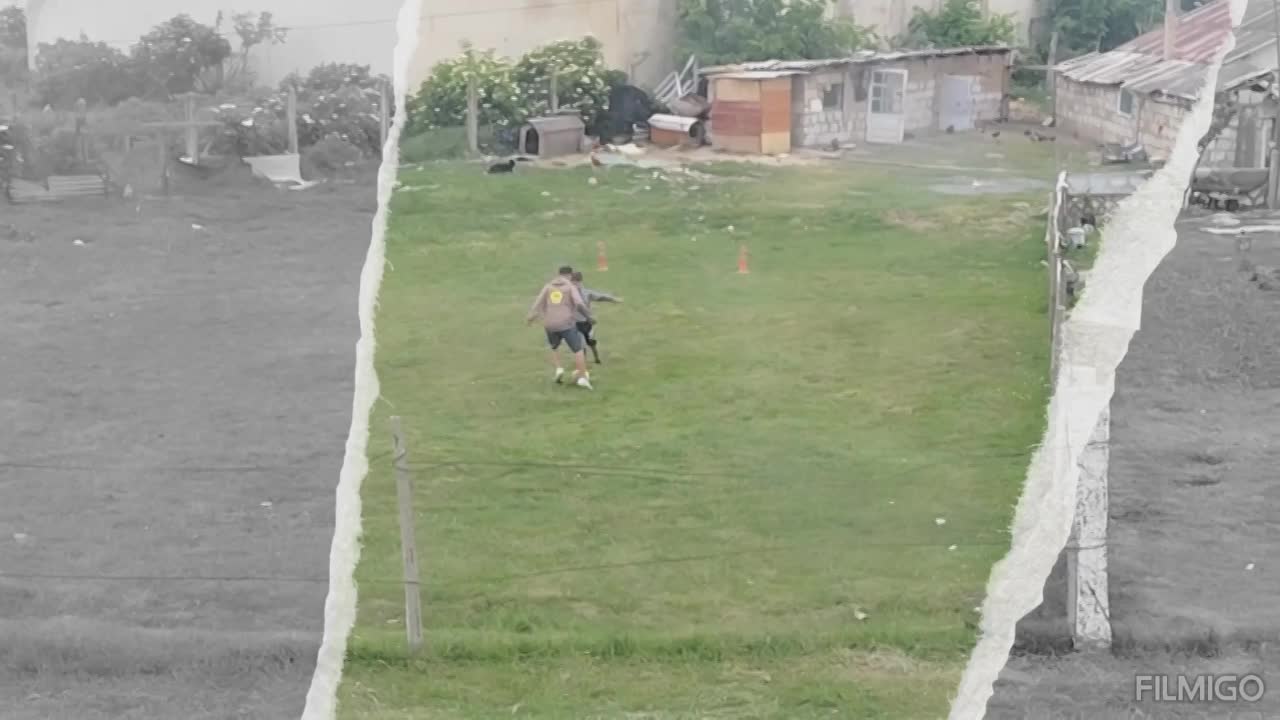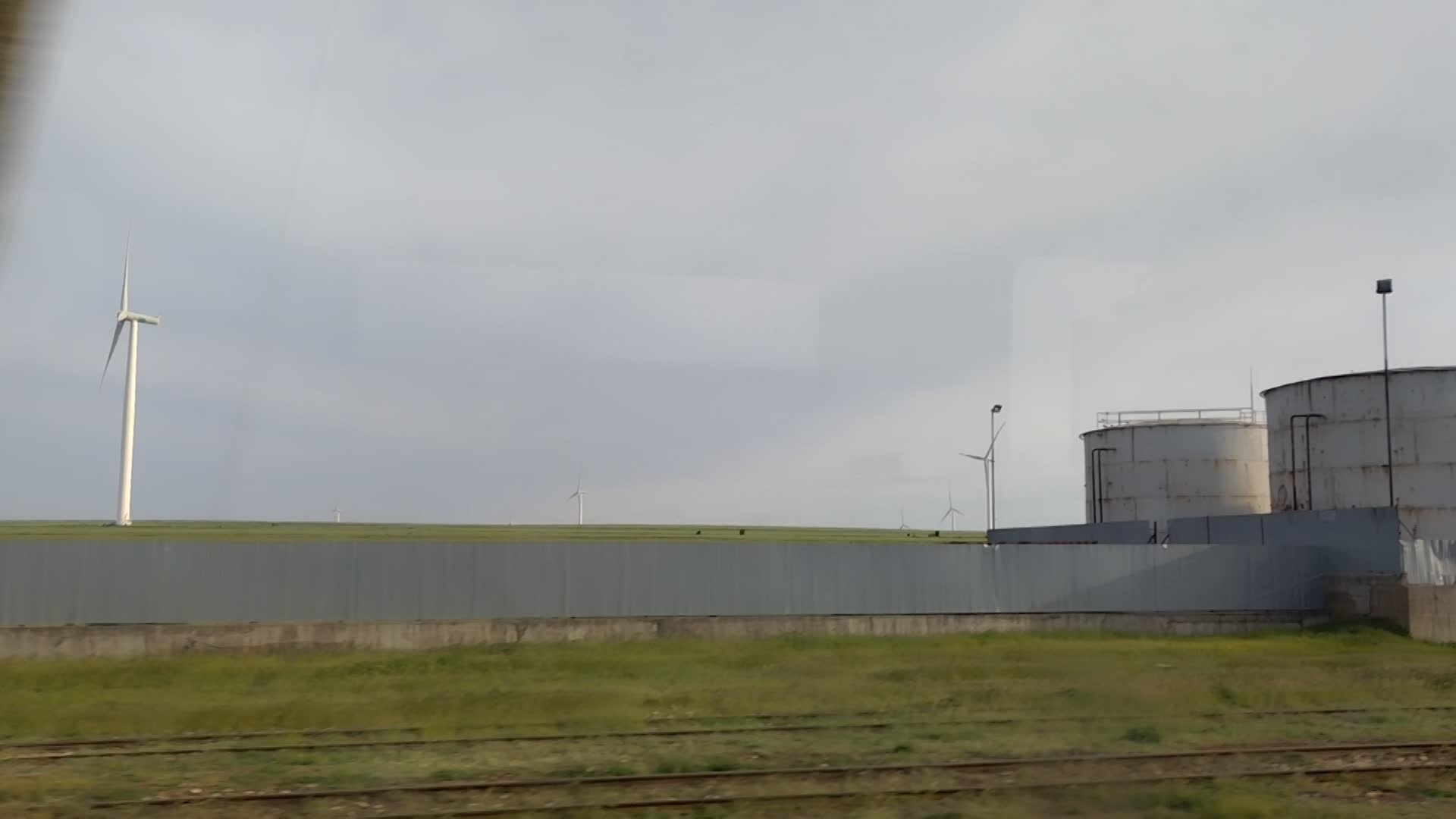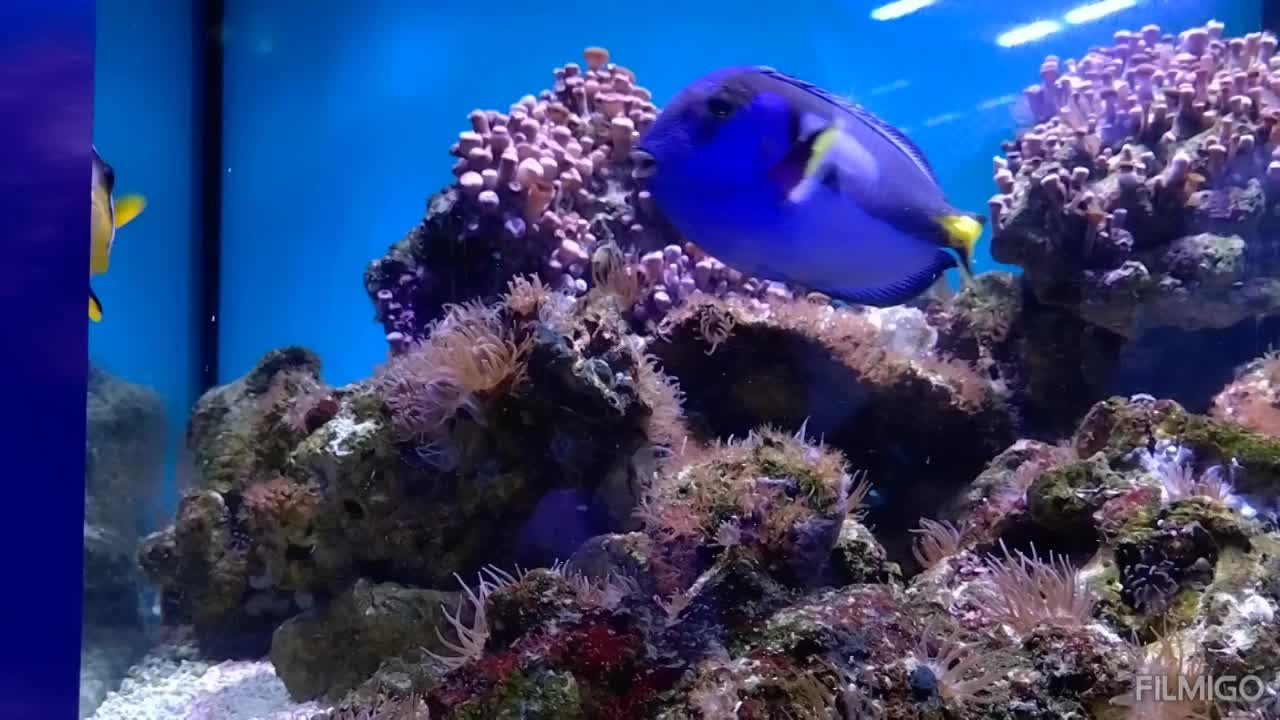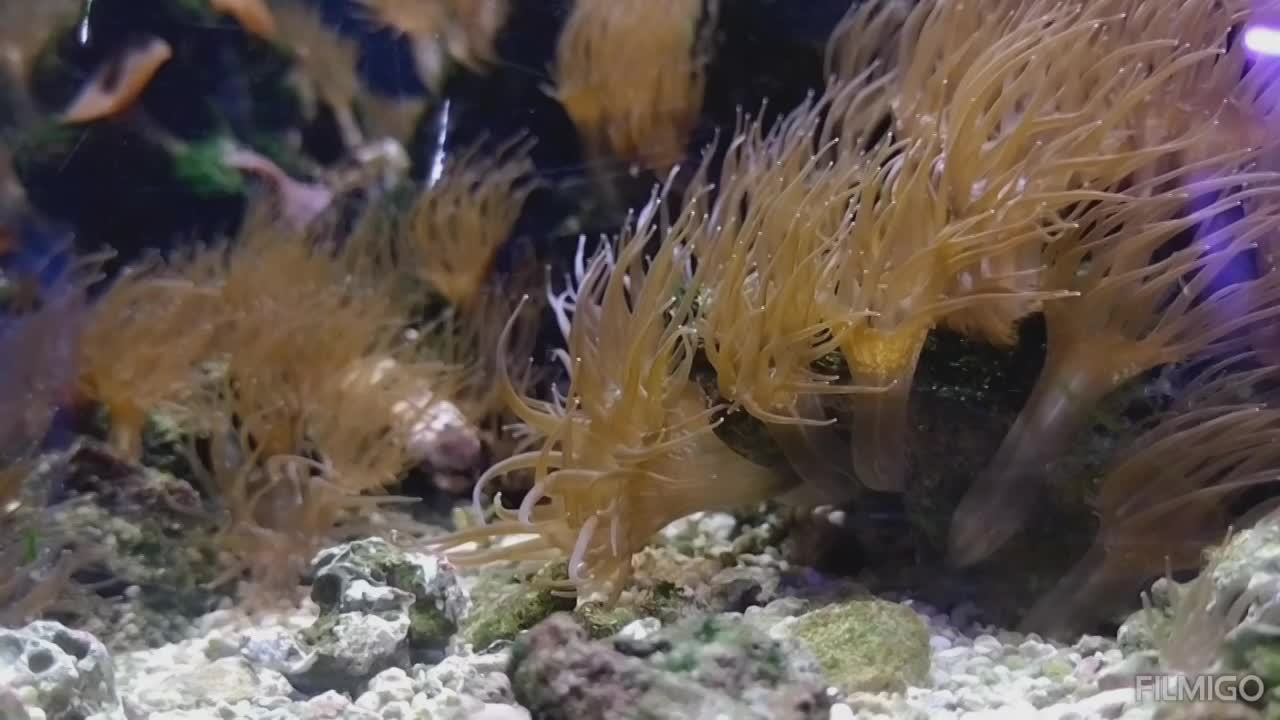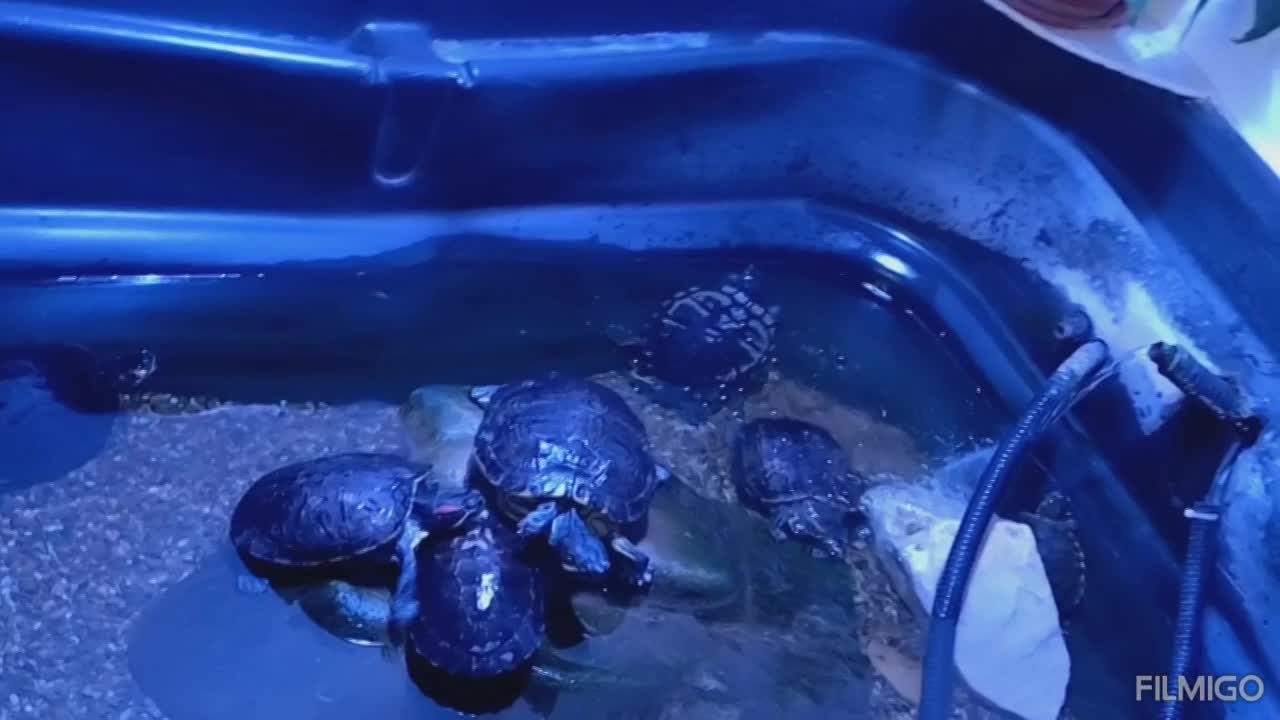Plăcându-mi foarte mult ce am văzut în zona constănțeană a Dobrogei, mini-vacanța din Mai am planificat-o la Mila 23; am adăugat însă la cele 2 zile (și ceva) de Deltă și câteva zile în Tulcea, municipiul de reședință al județului. Aici voi documenta doar prima zi și jumătate petrecută în Tulcea. Partea a doua, aici.
Liking very much what I saw in the Constanța area of Dobrogea, I planned the May mini-vacation at Mila 23; however, I added a few days in Tulcea, the county seat, to the two (and a bit) days in the Delta. I will document here only the first day and a half spent in Tulcea. Part two, here.
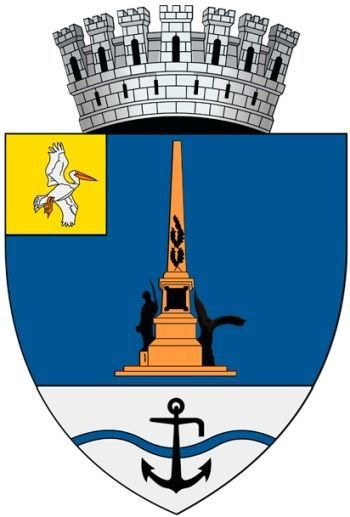
Stema județului prezintă monumentul care simbolizează reintegrarea Dobrogei în România în 1878; ancora reprezintă activitățile de navigație, portuare și de construcție navală; pelicanul semnifică Delta Dunării, unde este situat orașul // The arms feature the monument symbolizing Dobruja's reintegration into Romania in 1878; the anchor represents the shipping, port activity, and shipbuilding; the pelican signifies the Danube Delta, where the city is located
1. Drumul // The Road
Scene de la sat: Campioni în devenire // Rural scenes: Future champions
La Tulcea n-am mai plecat cu mașina, dorind mai multă relaxare și mai puține griji - am primit la schimb cele aferente mersului cu trenul înspre un oraș mic din România (cu bune și cu rele).
We no longer left for Tulcea by car, wanting more relaxation and fewer worries - we dealt instead with traveling by train to a small Romanian town (with its pros and cons).
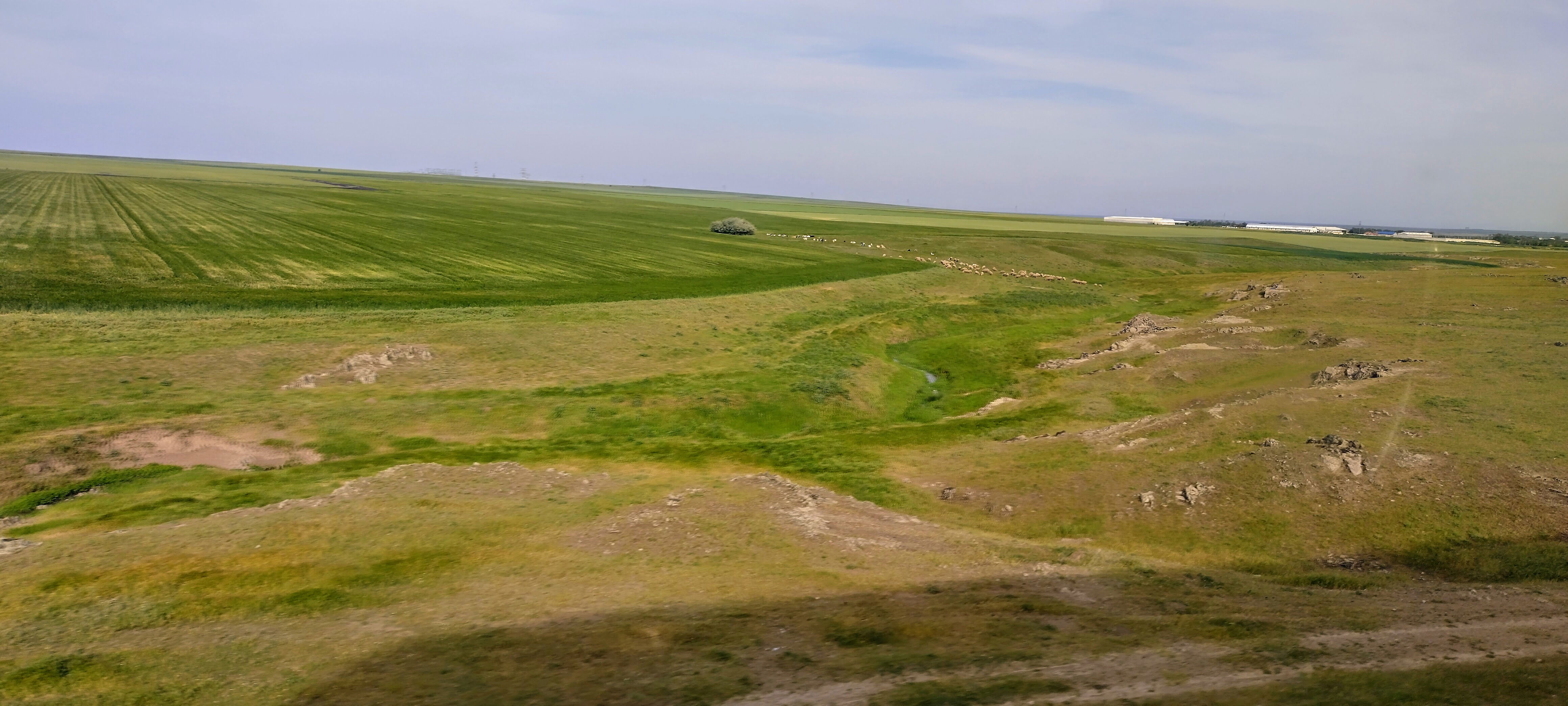
Peisaj dobrogean // Dobrujan landscape
Spre Tulcea nu există tren direct din București; astfel, am plecat într-o sâmbătă pe la prânz cu trenul de Constanța, până la Medgidia. De la Medgidia am schimbat Săgeata pe un Personal (aka Regio), care a circulat în județul Constanța pe ruta Nicolae Bălcescu - Târgușor - Cogealac - Mihai Viteazu, după care a continuat în județul Tulcea prin Baia - Ceamurlia de Jos - Babadag - Zebil - Mihail Kogălniceanu - Cataloi - Tulcea Mărfuri - Tulcea Oraș.
There is no direct train from Bucharest to Tulcea; thus, on a Saturday around noon, we took the train to Constanța, until Medgidia. From Medgidia, we switched from the Săgeată (Arrow) to a Personal (aka Regio), which traveled in Constanța County on the route Nicolae Bălcescu - Târgușor - Cogealac - Mihai Viteazu, then continued in Tulcea County through Baia - Ceamurlia de Jos - Babadag - Zebil - Mihail Kogălniceanu - Cataloi - Tulcea Mărfuri - Tulcea Oraș.
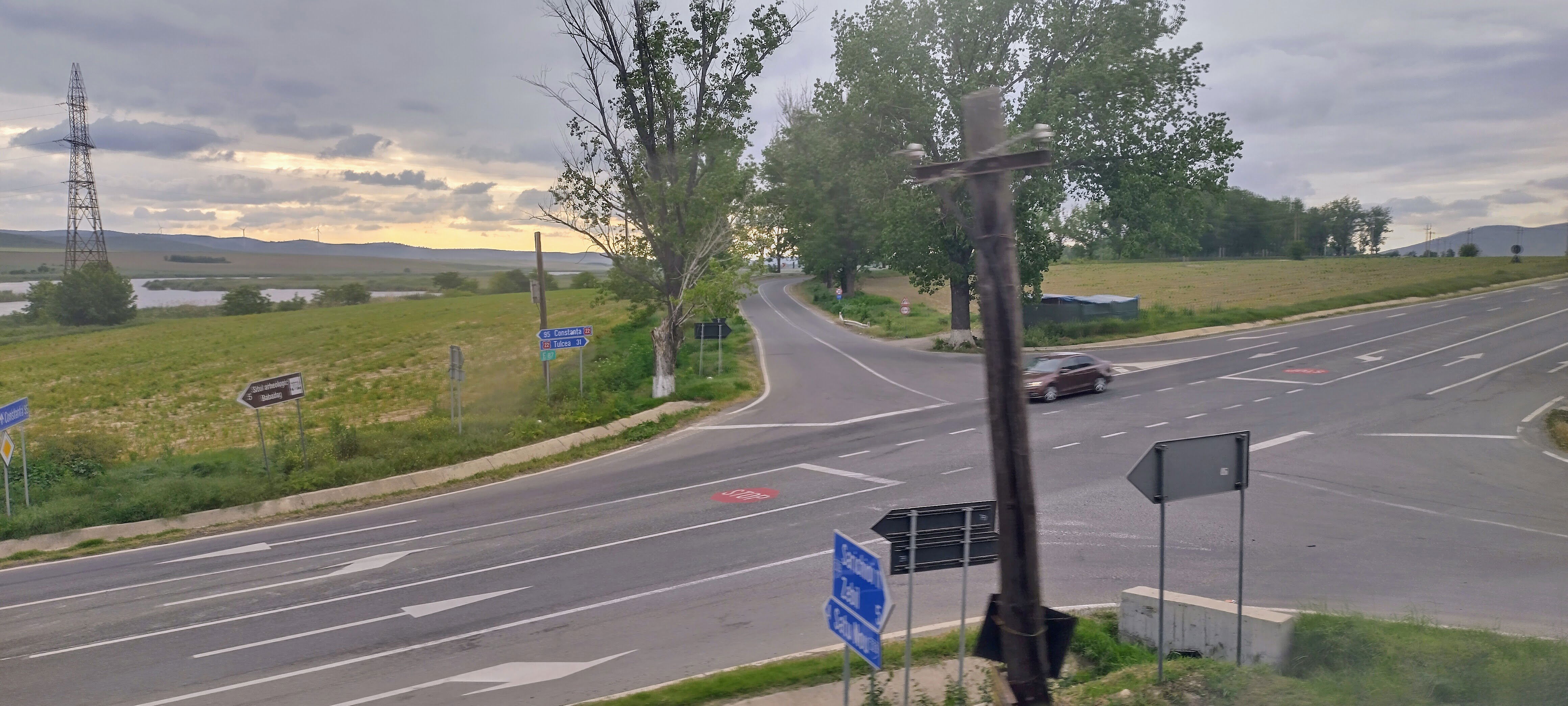
La răscruce de drumuri // At a crossroad
Drumul, un mix de natură superbă cu un peisaj post-industrial și, bineînțeles, cu frumoasele eoliene de la Cogealac, pe care acum le-am văzut și din tren.
The journey was a mix of superb nature with a post-industrial landscape and, of course, the beautiful wind turbines at Cogealac, which we saw from the train this time.
Glasul roților de tren // The sound of the train wheels
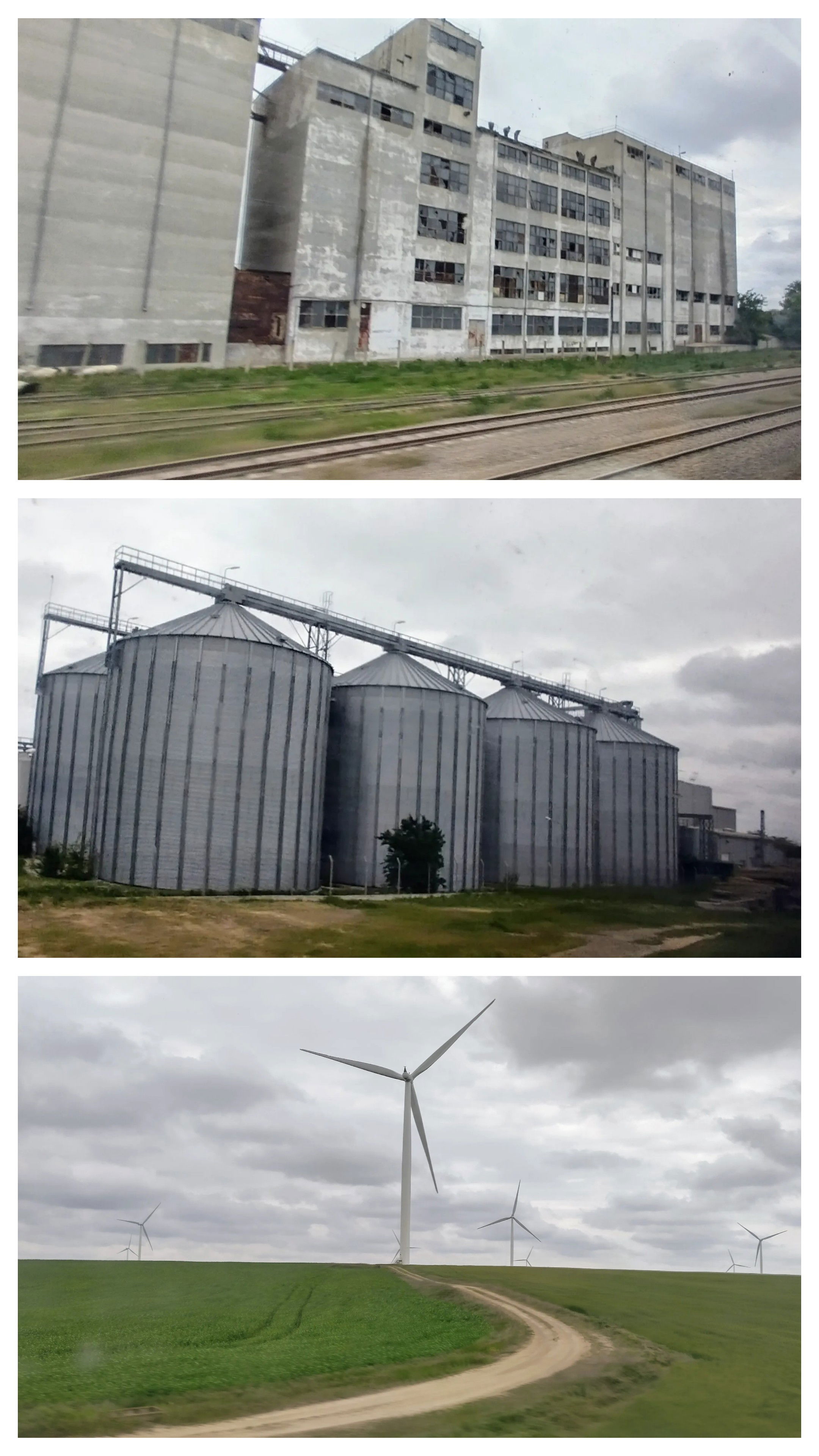
Peisaj industrial vechi și nou // Old and new industrial landscape
Eoliene // Wind turbines
În zona Babadagului am surprins lacul și podișul Babadag, la care vom dori să ne întoarcem mai pe îndelete. Cu trenul am trecut prin Rezervația Naturală Pădurea Babadag.
In the Babadag area, we briefly saw the lake and the Babadag plateau, which we would like to explore more thoroughly at a later point. By train, we passed through the Babadag Forest Natural Reserve.
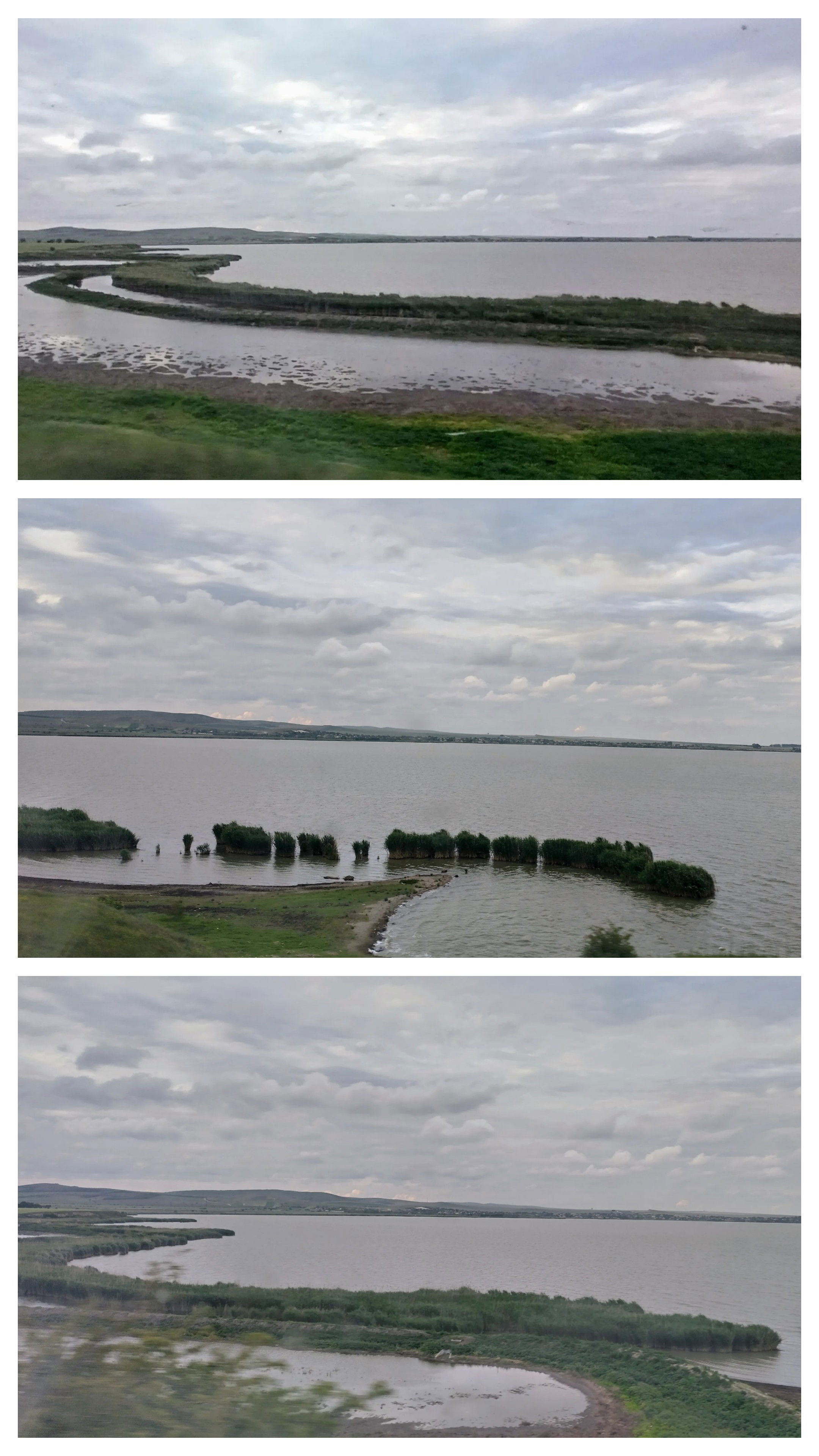
Lacul Babadag // The Babadag Lake
Am urcat apoi spre dealurile Tulcei ca să ajungem, după 3 ore de mers încet și oprit în toate haltele, în frumosul oraș Tulcea.
We then climbed towards the hills of Tulcea and arrived, after 3 hours of slow travel and stops at every halt, in the beautiful city of Tulcea.
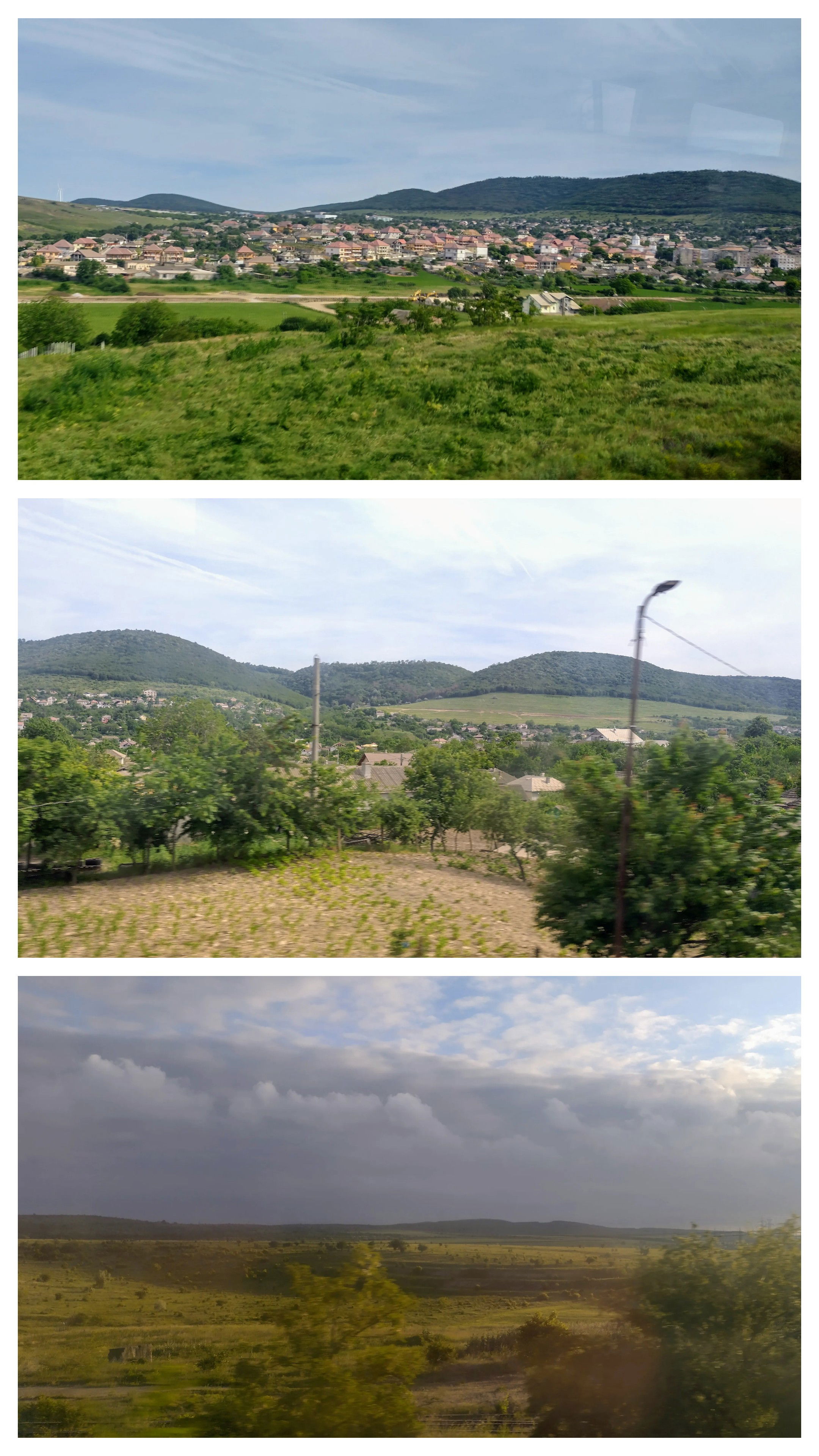
Vedere din tren spre dealurile Tulcei // View from the train towards the Tulcea hills
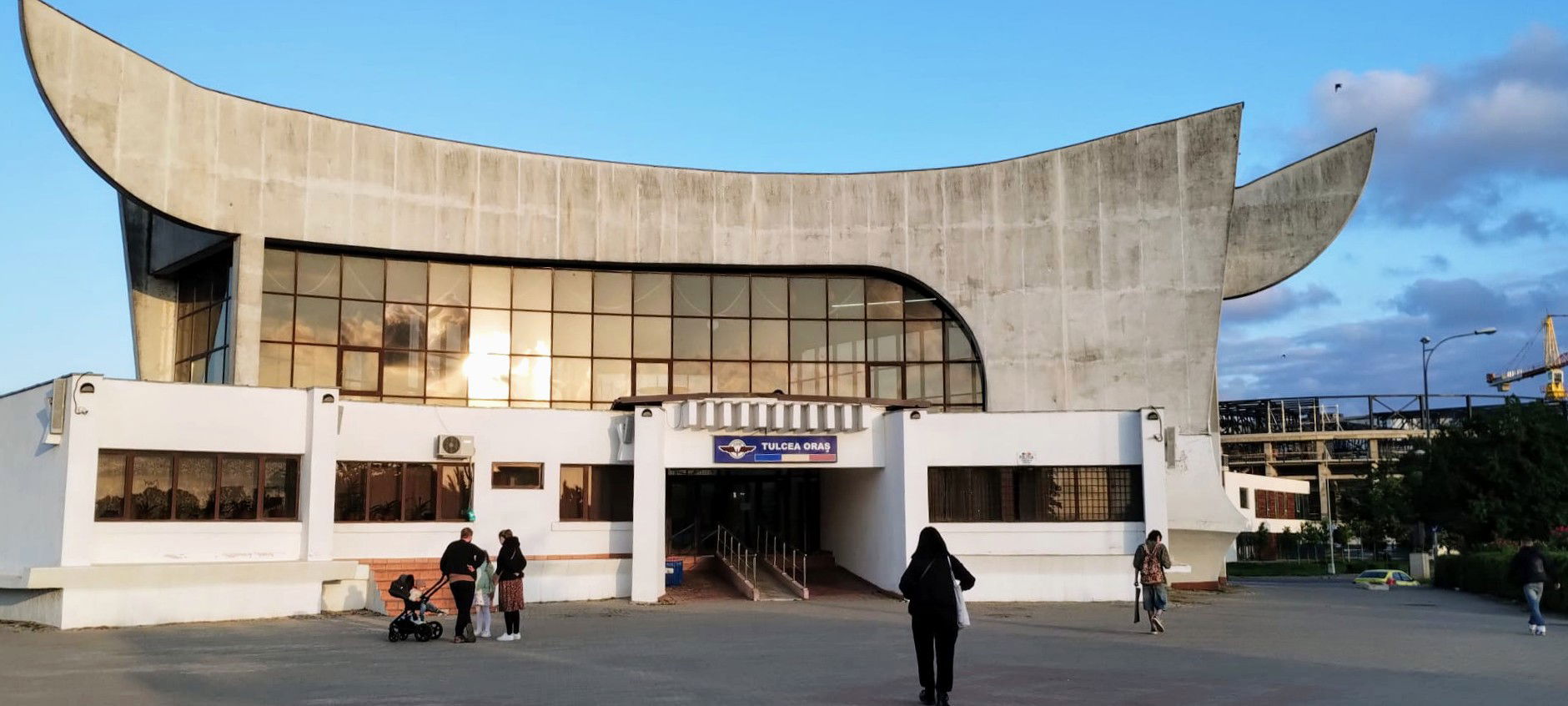
Frumoasa gară modernistă din Tulcea (1972, arhitect Irina Rosetti) // The beautiful modernist train station in Tulcea (1972, architect Irina Rosetti)
2. Muzeul de Etnografie și Artă Populară // The Etnography and Folk Art Museum
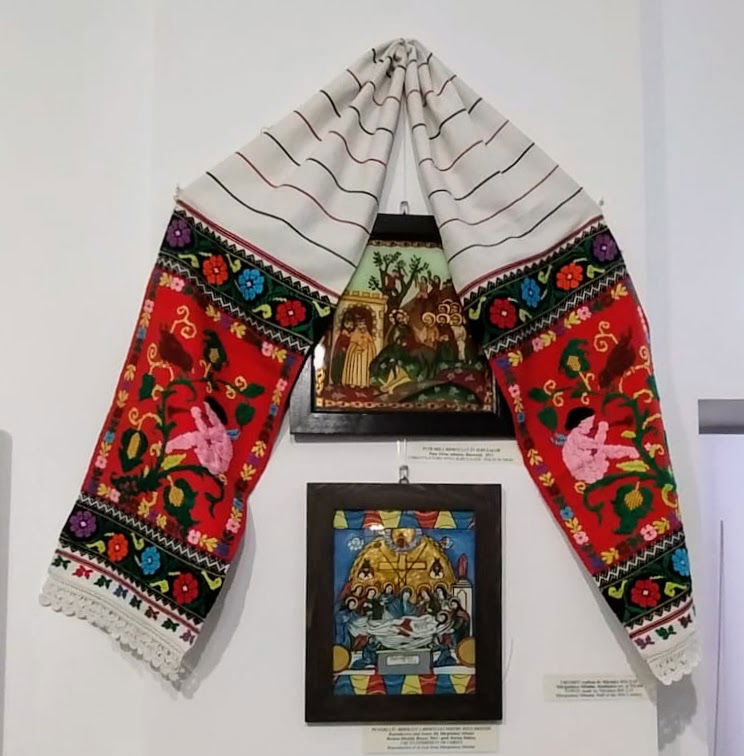
Am început a doua zi de dimineață traseul cultural prin Tulcea. Ne-a surprins acest mic muzeu, prea puțin celebru, cu colecțiile sale frumoase.
We embarked on our cultural route through Tulcea the next morning. We were pleasantly surprised by this small, little-known museum with its beautiful collections.
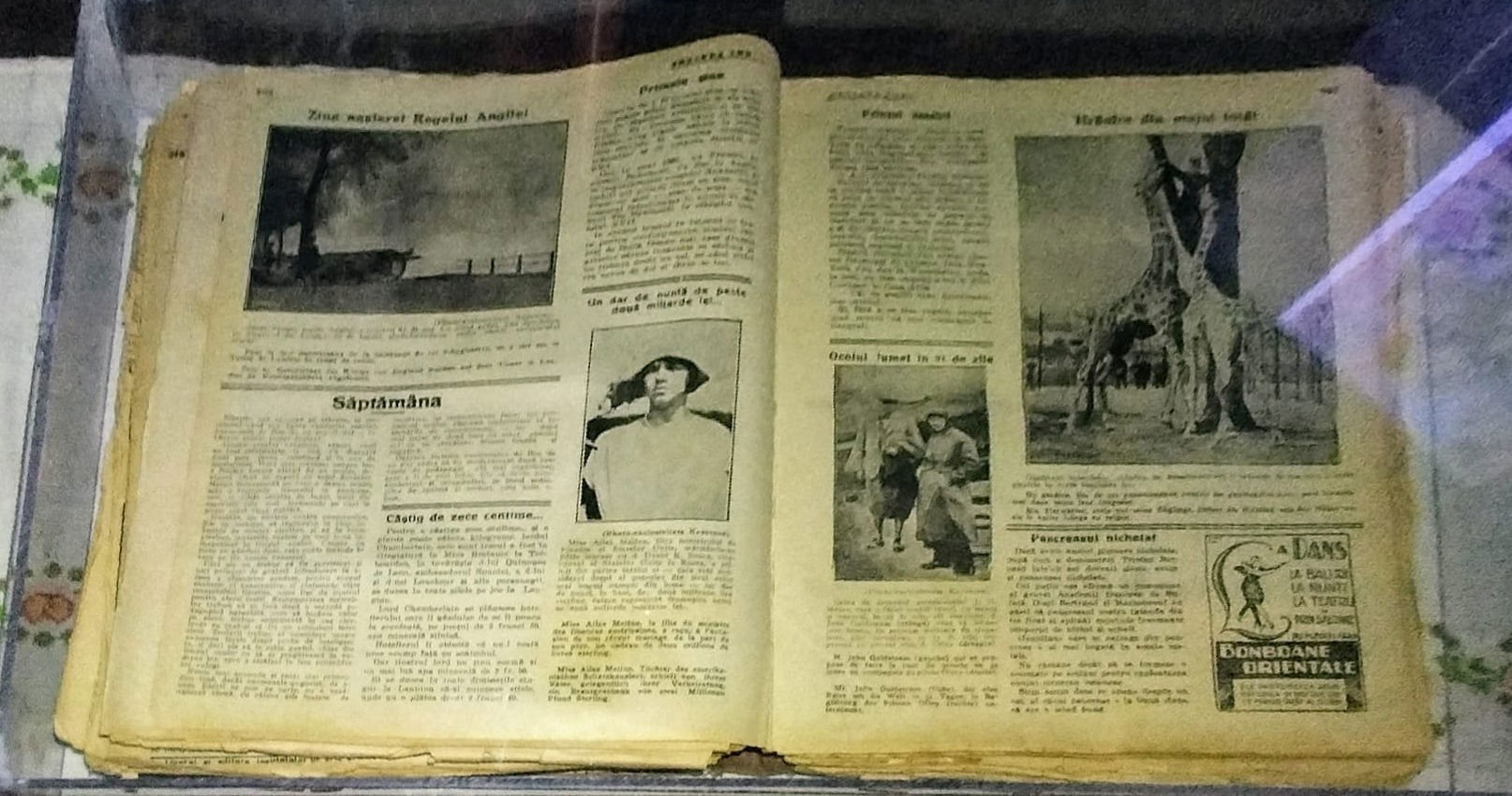
Tipărituri locale // Local prints
Am început turul la parter, unde sunt amenajate diorame cu ocupațiile tradiționale din zonă - de la creșterea animalelor și pescuit, la prelucrarea produselor, precum țesutul sau tâmplăria.
We started the tour on the ground floor, where dioramas are set up showcasing the traditional occupations of the area - from animal husbandry and fishing to processing products like weaving and carpentry.
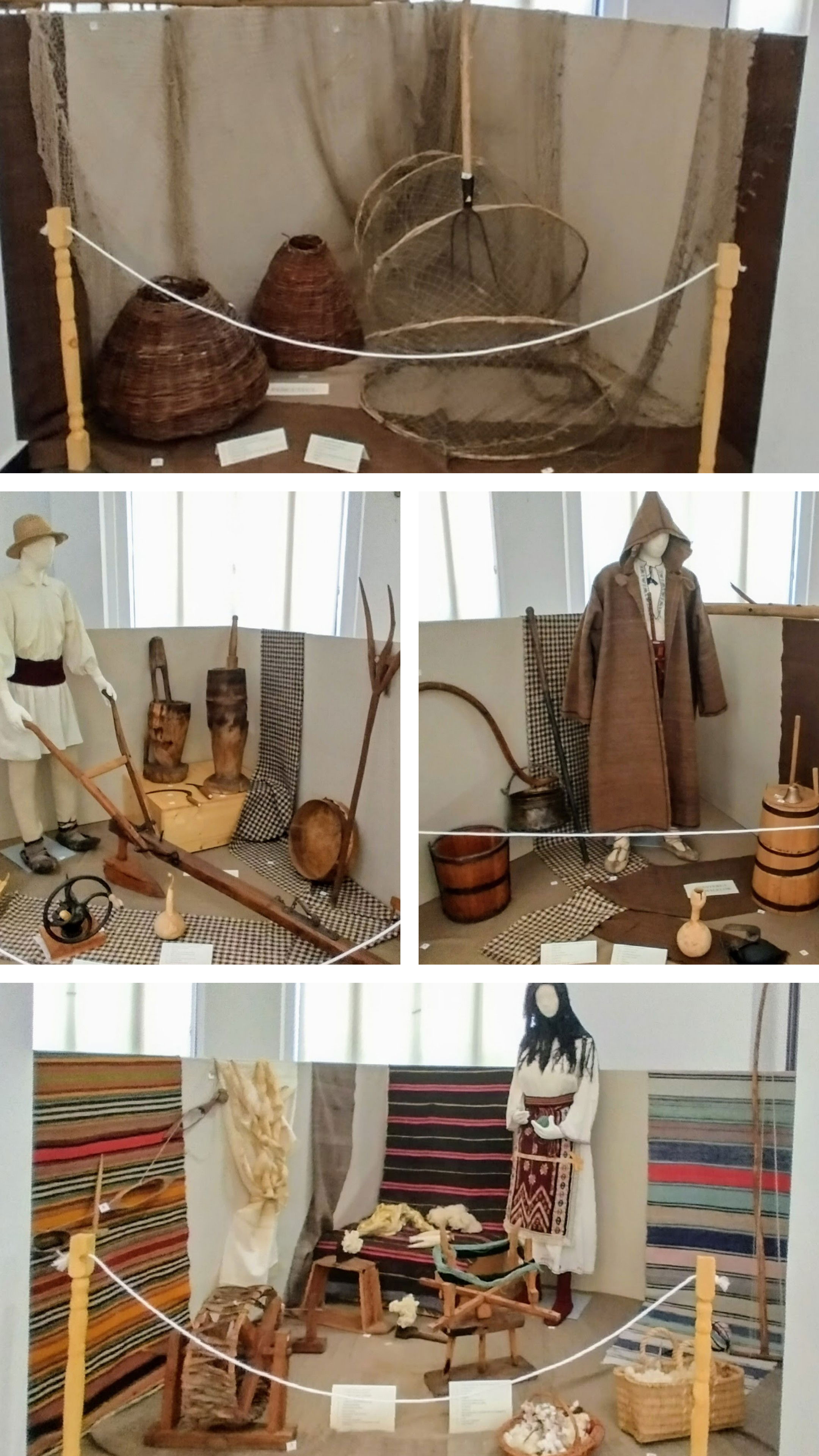
Exemple de diorame // Sample dioramas
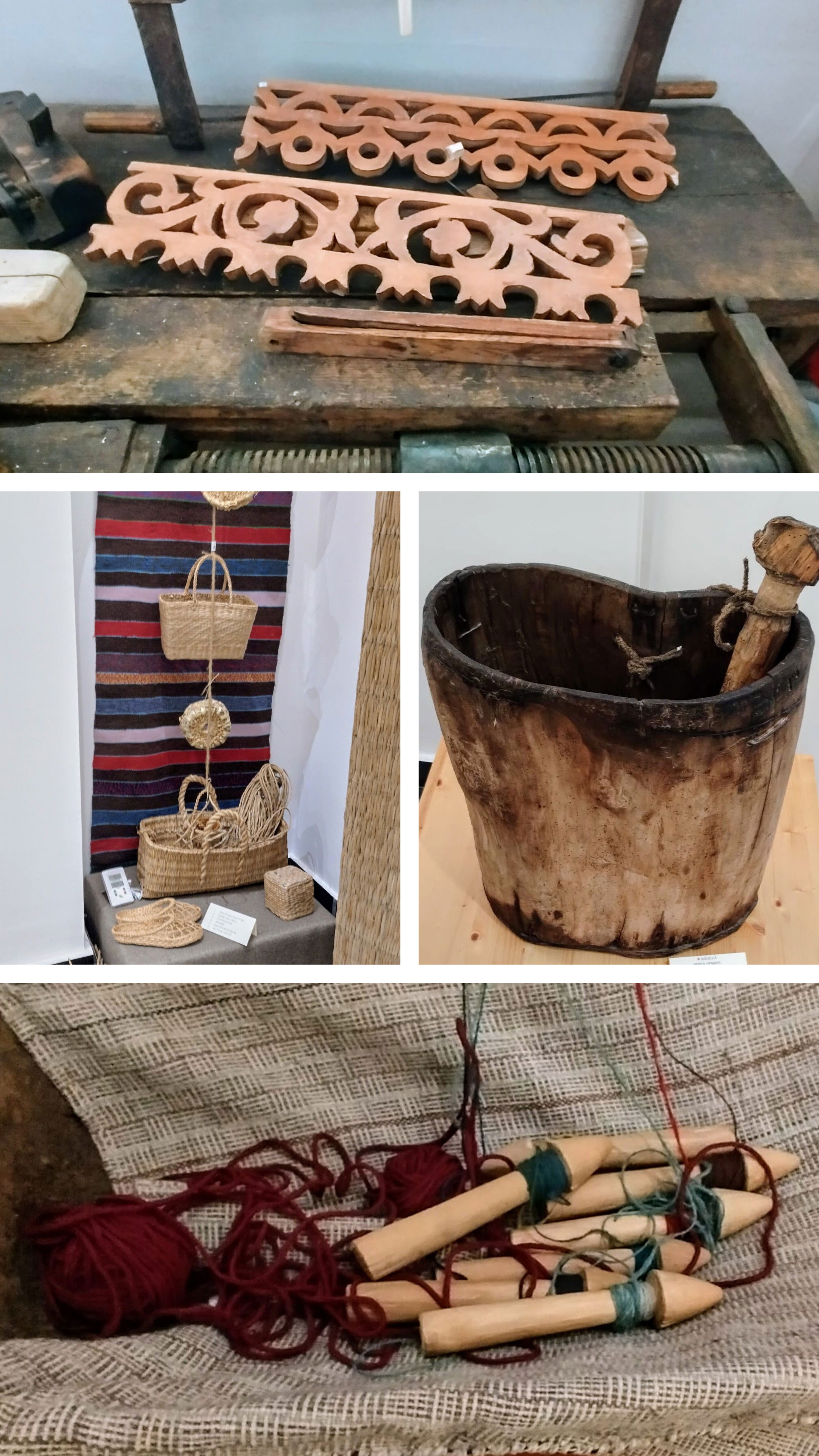
Detaliu: Obiecte tradiționale // Detail: Traditional objects
Printre diorame regăsim și casete cu broderii tradiționale, ștergare și covoare.
Between the dioramas, we also found boxes with traditional embroideries, towels, and carpets.
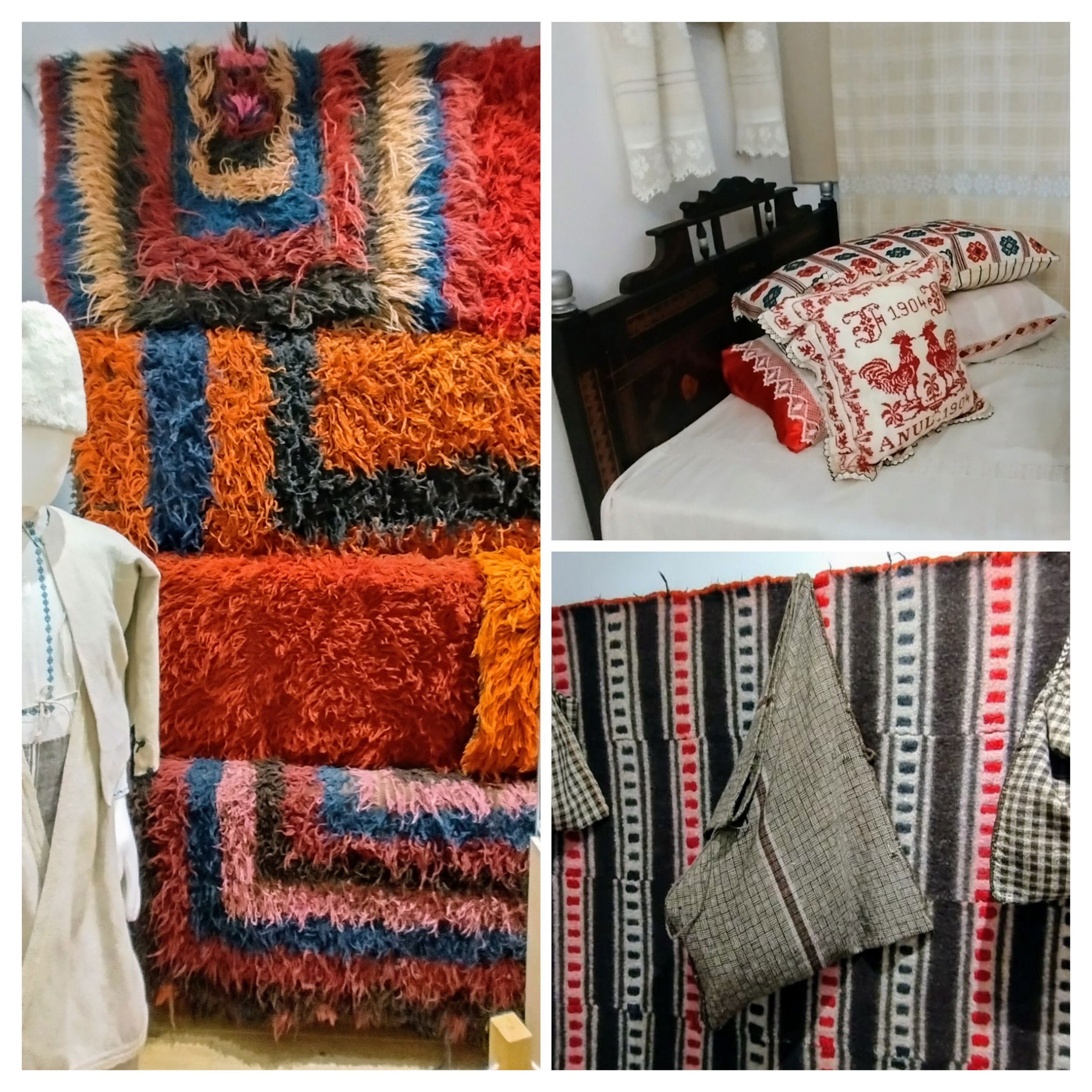
Acestea continuă și la etaj, unde sunt dispuse în secțiuni reprezentând diversele etnii care locuiesc în zonă.
These continue upstairs, where they are displayed in sections representing the various ethnic groups that inhabit the area.

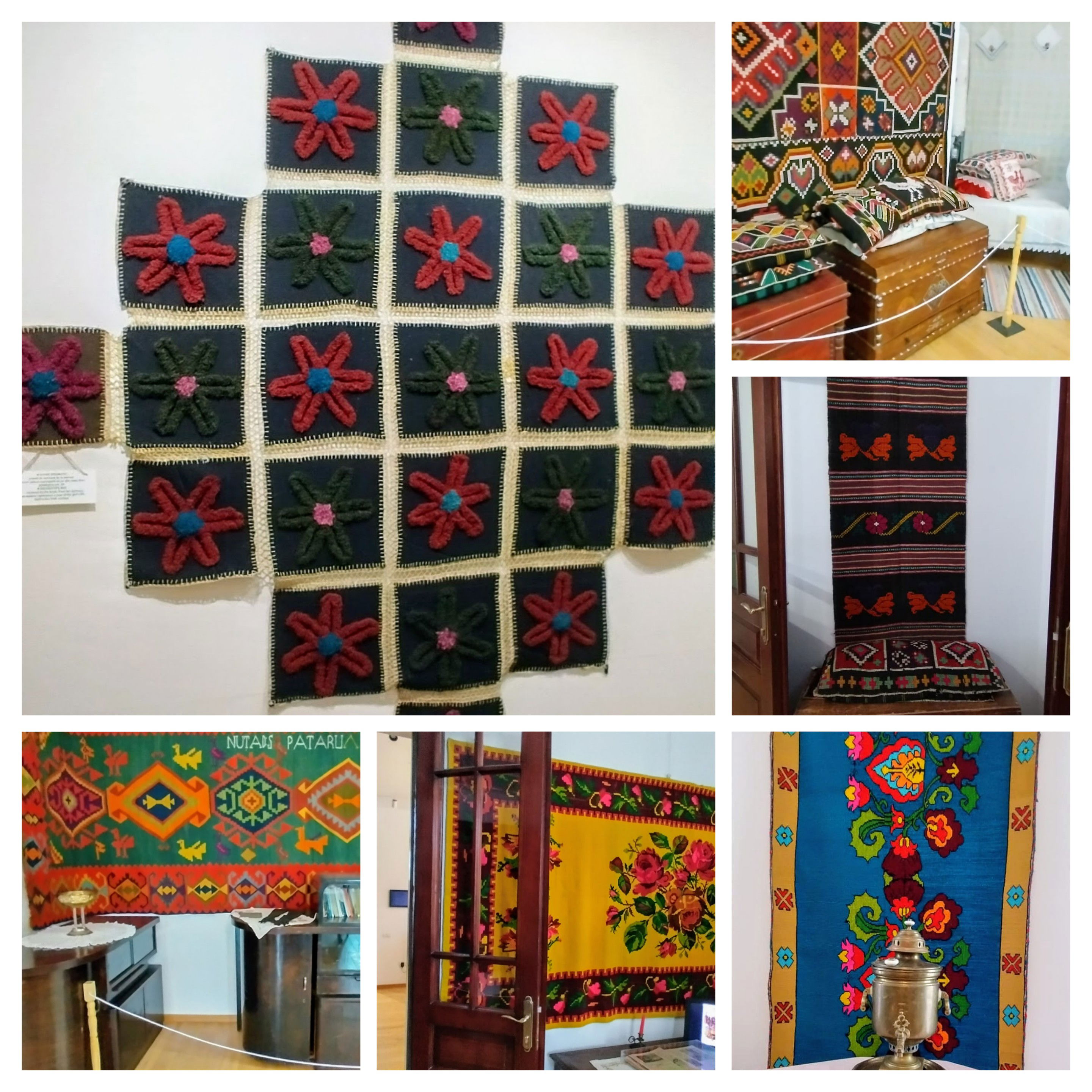
Până acolo însă, ne-am oprit asupra unei uși masive marca Fichet, care a servit ca seif (sau... fișet) al băncii (clădirea muzeului a funcționat ca sediu al Băncii Naționale a României) și care acum găzduiește tezaurul muzeului.
However, before reaching there, we stopped to admire a massive Fichet door, which once served as the bank's safe, or... fichet (the museum building used to function as the headquarters of the National Bank of Romania) and which now houses the museum's treasury.
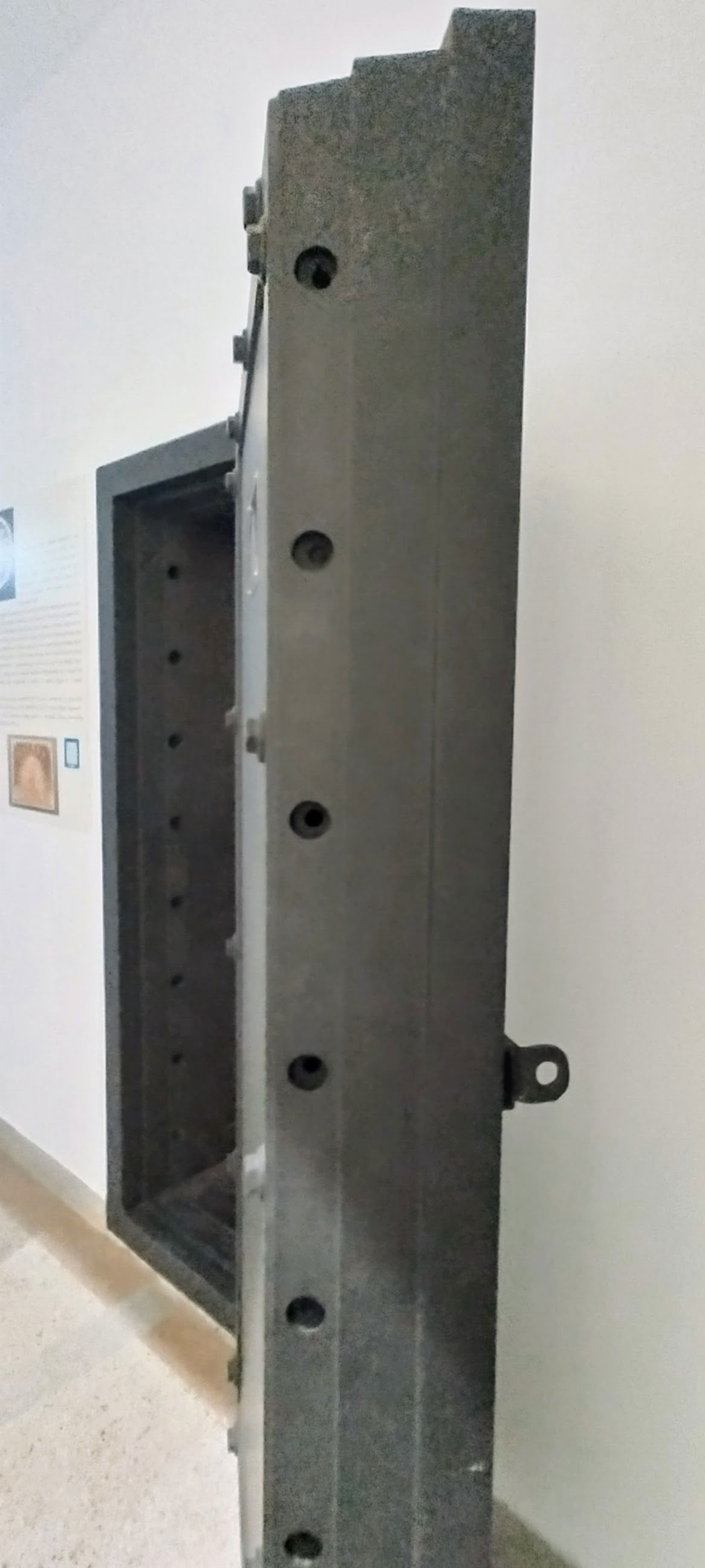
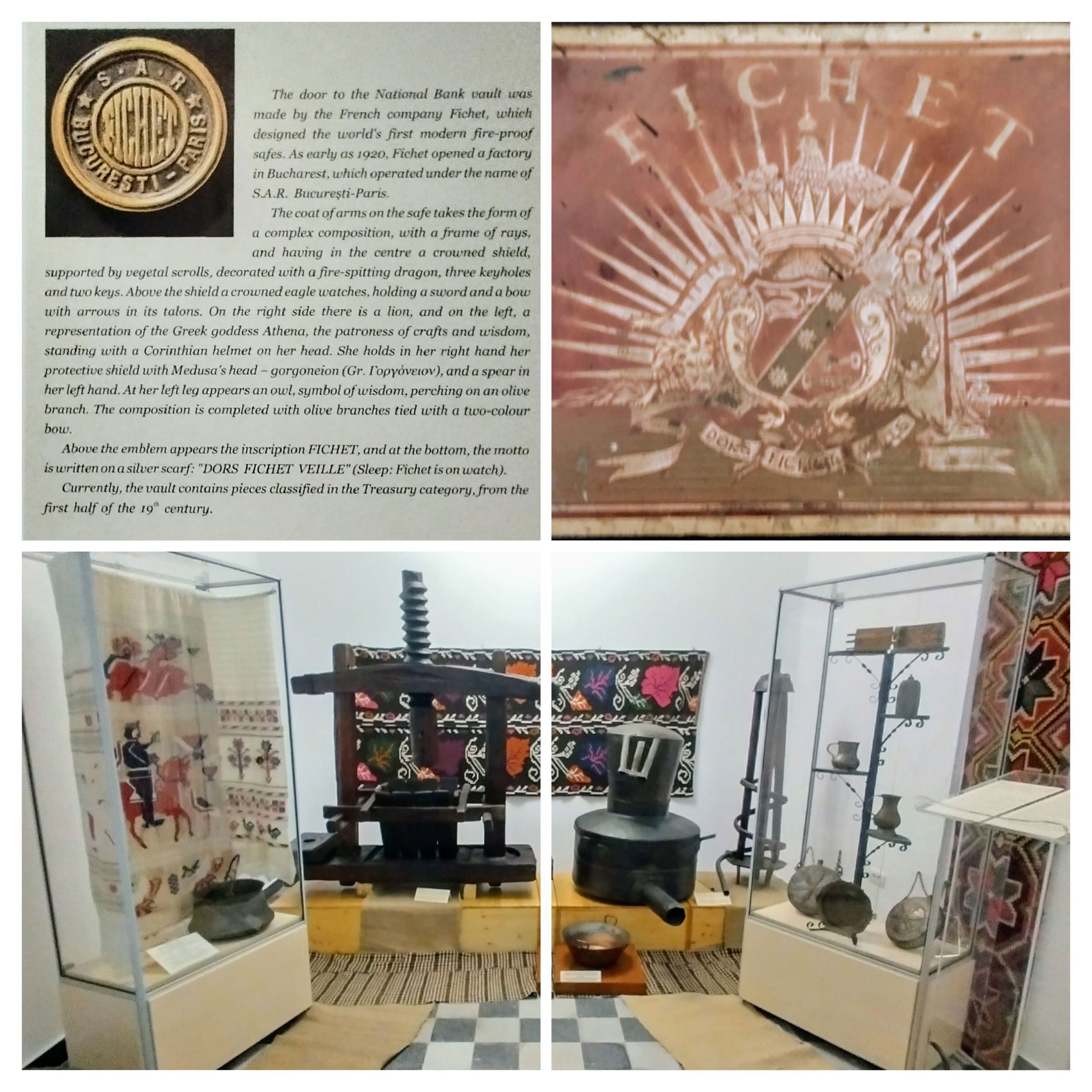
Seiful Fichet și tezaurul // The Fichet safe and the treasury
Din loc în loc, găsim icoane în care predomină Fecioara Maria și Sfântul Nicolae, reprezentați după variile rituri ale ortodocșilor din zonă.
Here and there, we found icons predominantly featuring the Virgin Mary and Saint Nicholas, depicted according to the various rites of the local Orthodox Christians.
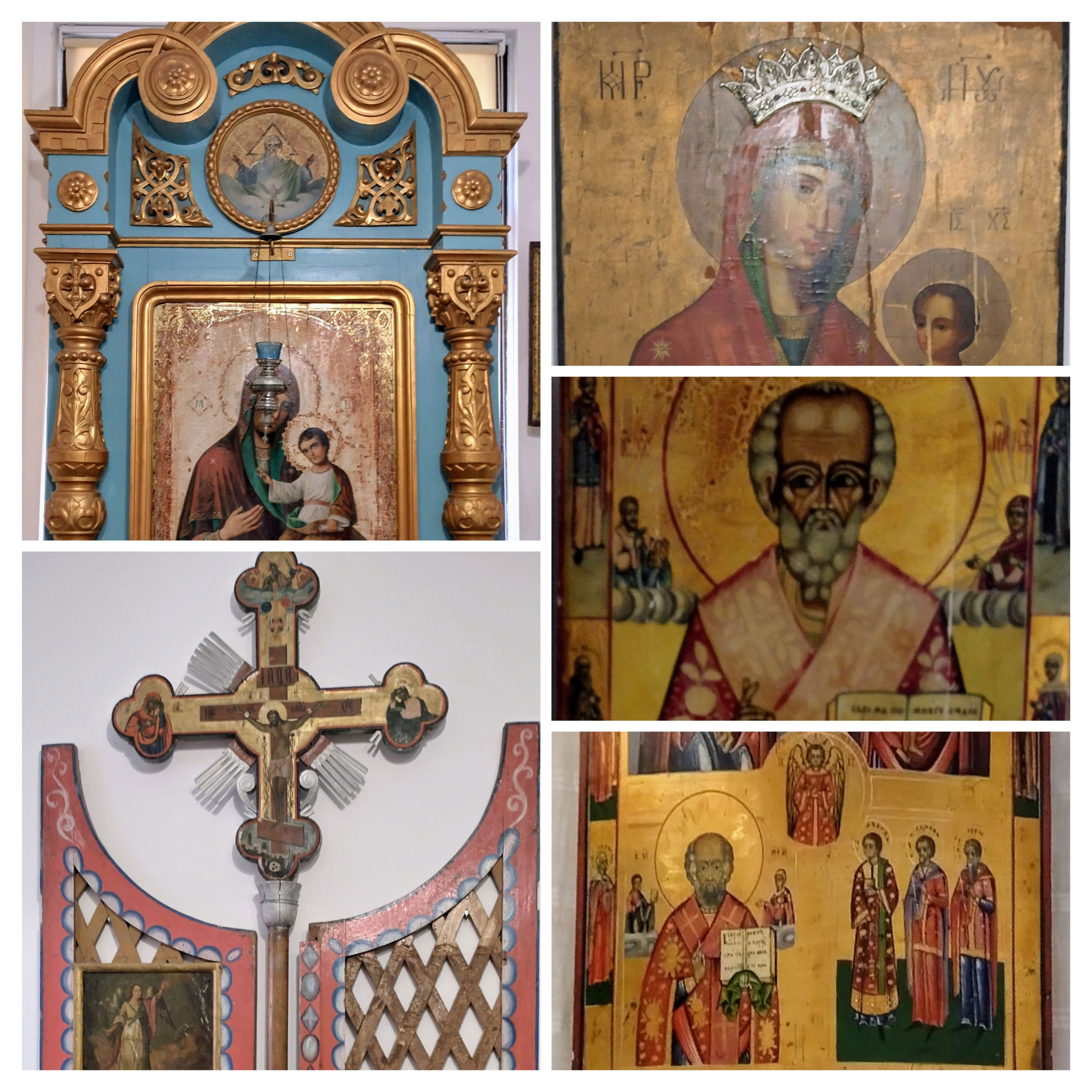
Printre etniile conlocuitoare din Dobrogea se numără românii (autohtoni, dunăreni, moldoveni), aromânii, meglenoromânii, bulgarii, rușii lipoveni, ucrainenii, grecii, turcii, tătarii, italienii, germanii, armenii, romii și evreii. Este, astfel, o încântare să te pierzi prin cămăruțele de la etaj, dedicate lor.
Among the cohabiting ethnicities in Dobrogea are Romanians (natives, Dunăreni, Moldovans), Aromanians, Megleno-Romanians, Bulgarians, Russian Lipovans, Ukrainians, Greeks, Turks, Tatars, Italians, Germans, Armenians, Roma, and Jews. It is, therefore, a delight to get lost in the small rooms upstairs dedicated to them.
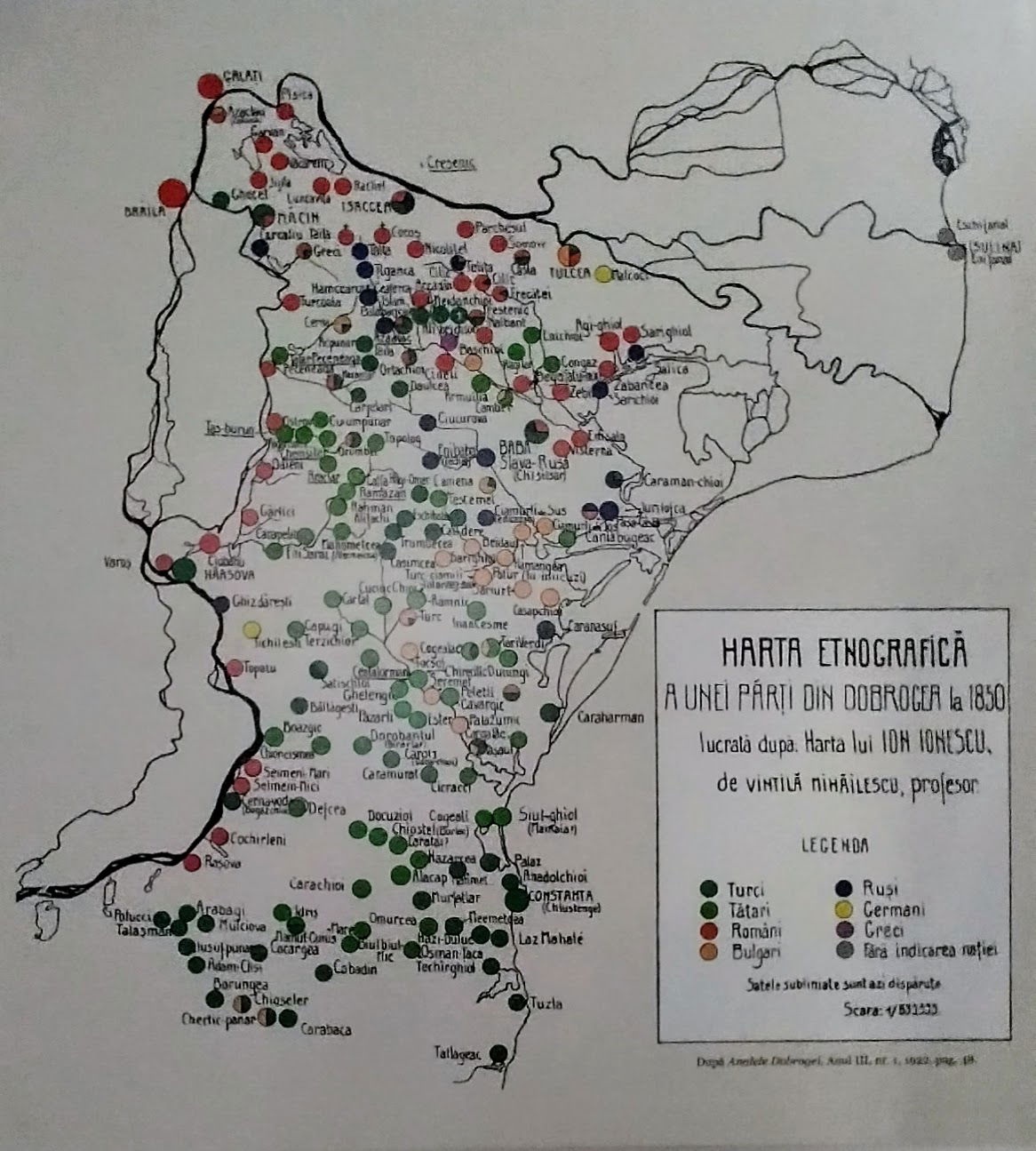
O veche hartă etnografică // An old ethnographic map
Tot la etaj găsim și o colecție de mobilă de diferite stiluri europene și orientale, precum și o zonă-atelier.
Also upstairs, we find a collection of furniture of different European and Oriental styles, as well as a workshop area.
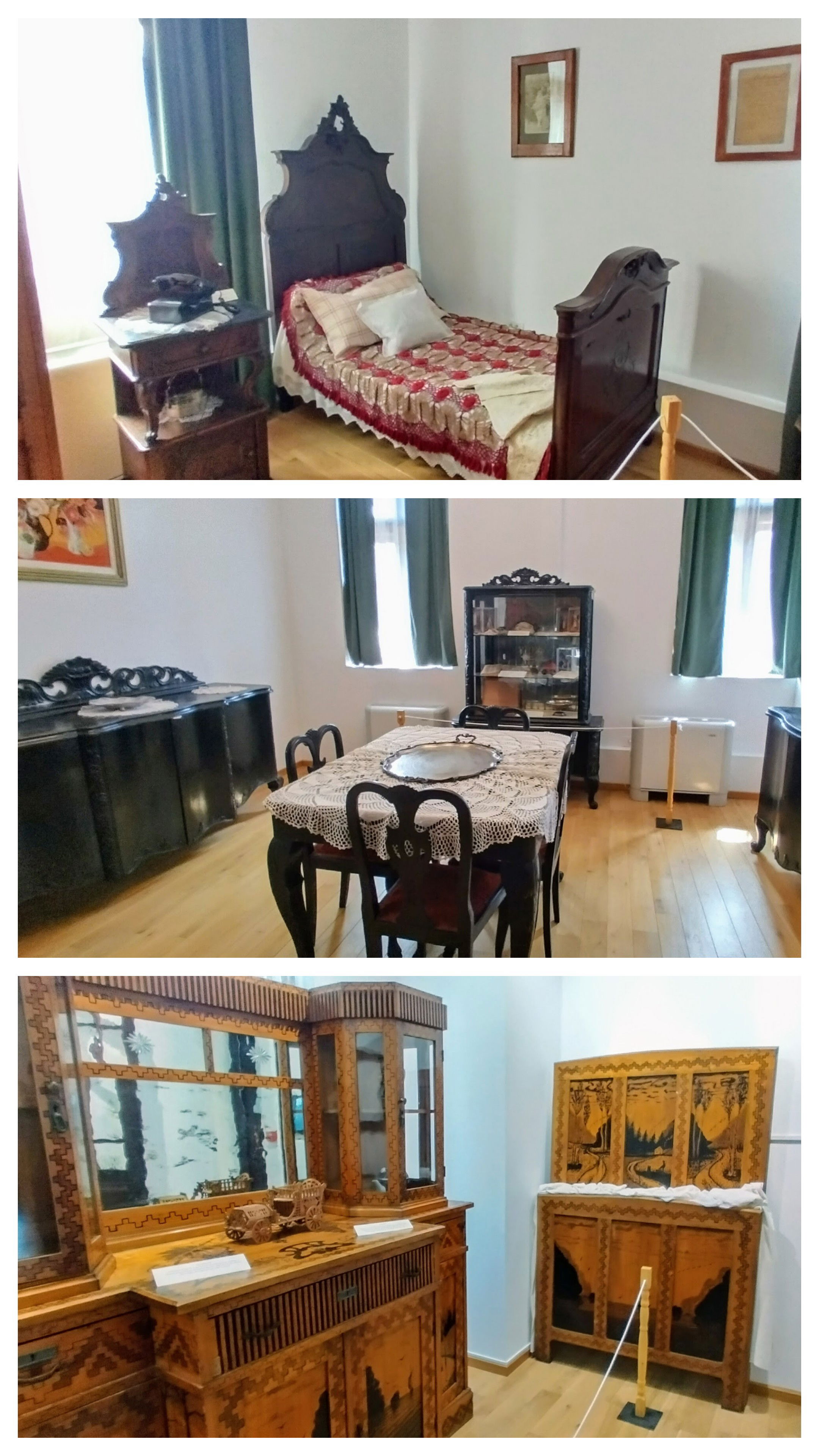
3. Muzeul Deltei Dunării // The Danube Delta Museum
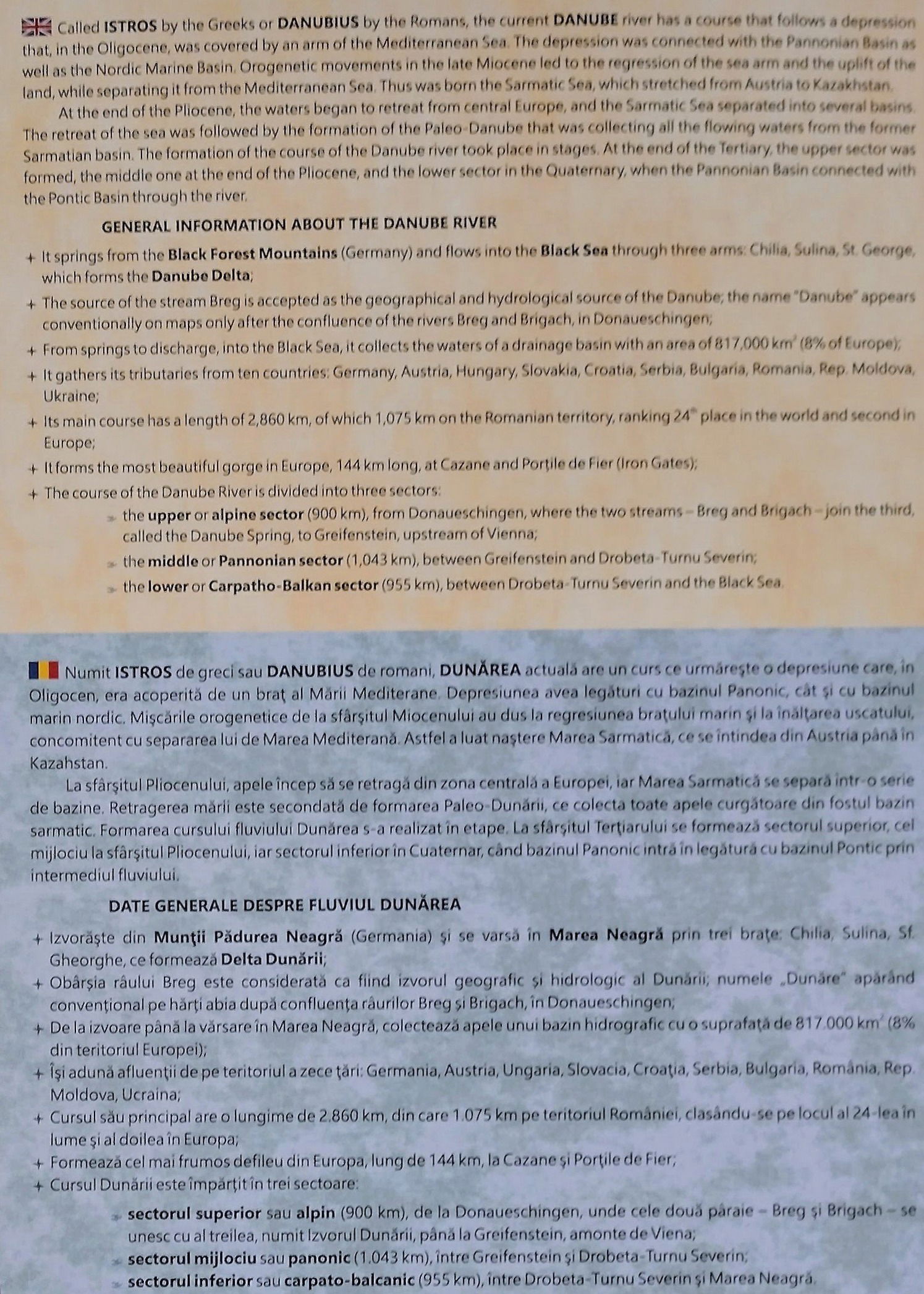
După o scurtă plimbare pe faleza Ivan Patzaichin (despre care vom vorbi mai pe larg în articolul despre Mila 23), unde am admirat un mural cu reușitele sale și monumentul ridicat în cinstea sa, am mâncat și prânzul la un restaurant din apropiere1 înainte de a ne continua circuitul pe la muzee.
1. https://tinyurl.com/2d7fbz5d
After a short walk along the Ivan Patzaichin promenade (who we'll talk about in more detail in the article about Mila 23), where we admired a mural depicting his achievements and the monument erected in his honor, we had lunch at a nearby restaurant1 before continuing our tour of the museums.
1. https://tinyurl.com/2d7fbz5d

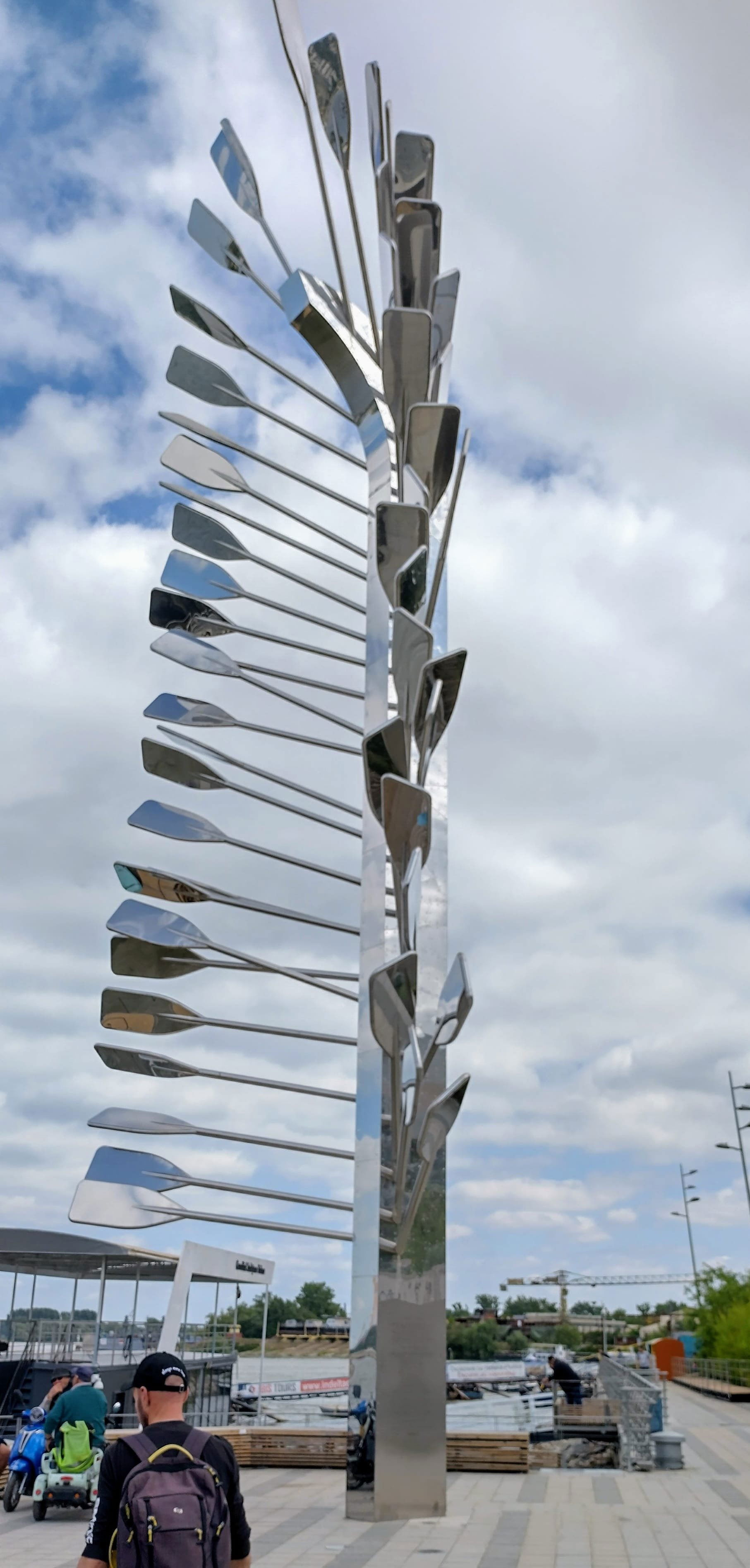
Marelui Ivan Patzaichin // To the great Ivan Patzaichin
Am poposit apoi la Muzeul Deltei, unde am vizitat trei paliere.
We then stopped at the Danube Delta Museum, where we visited three levels.
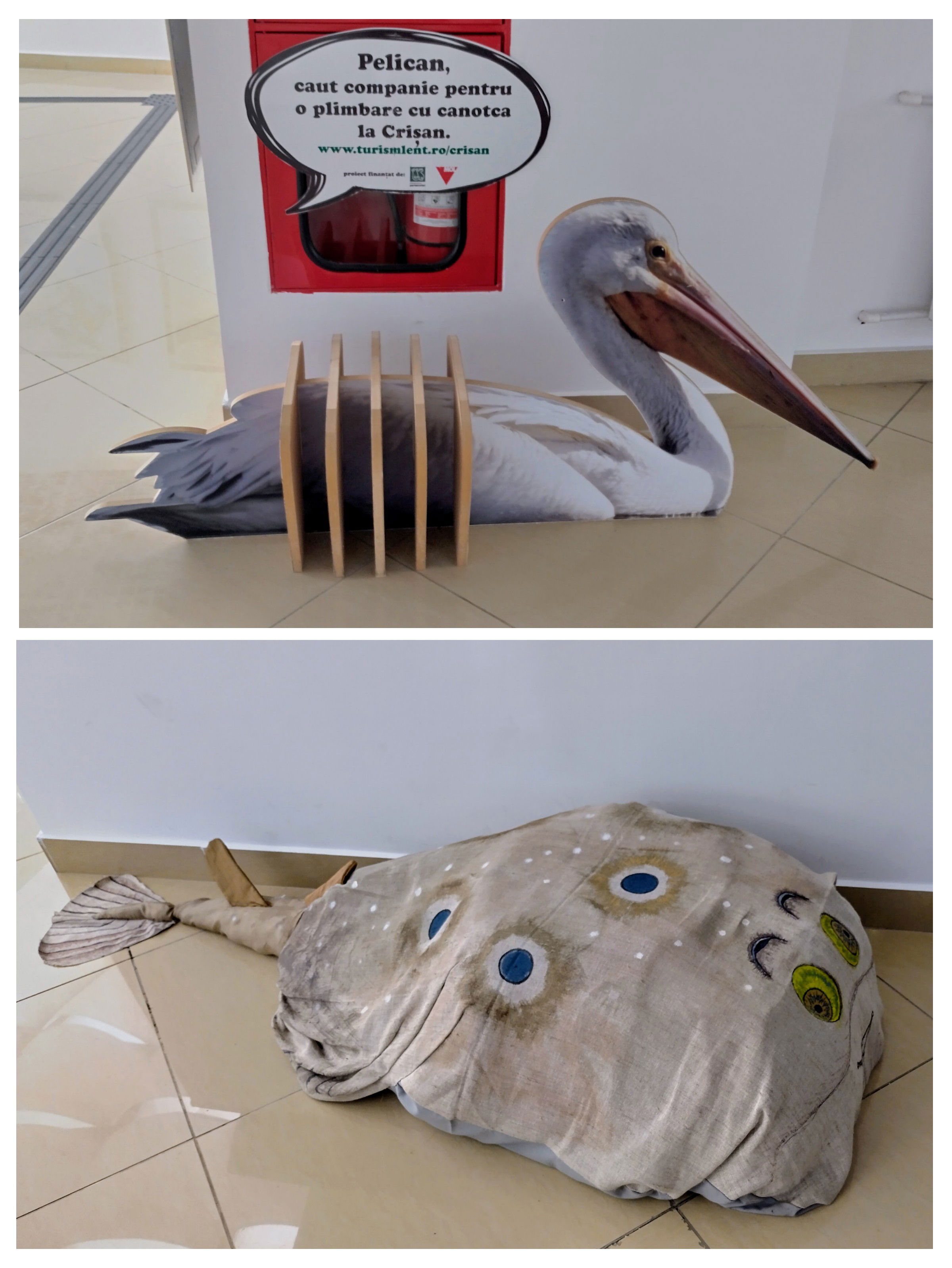
Parterul e informativ, cu date despre Delta Dunării, loc unic în Europa și pe care suntem norocoși să îl avem în mare parte pe teritoriul României (restul aflându-se în Ucraina) și cu diorame reprezentând variile ecosisteme din Deltă.
The ground floor is informative, with data about the Danube Delta, a unique place in Europe that we are fortunate to have mostly on Romanian territory (the rest being in Ukraine) and with dioramas representing the various ecosystems of the Delta.
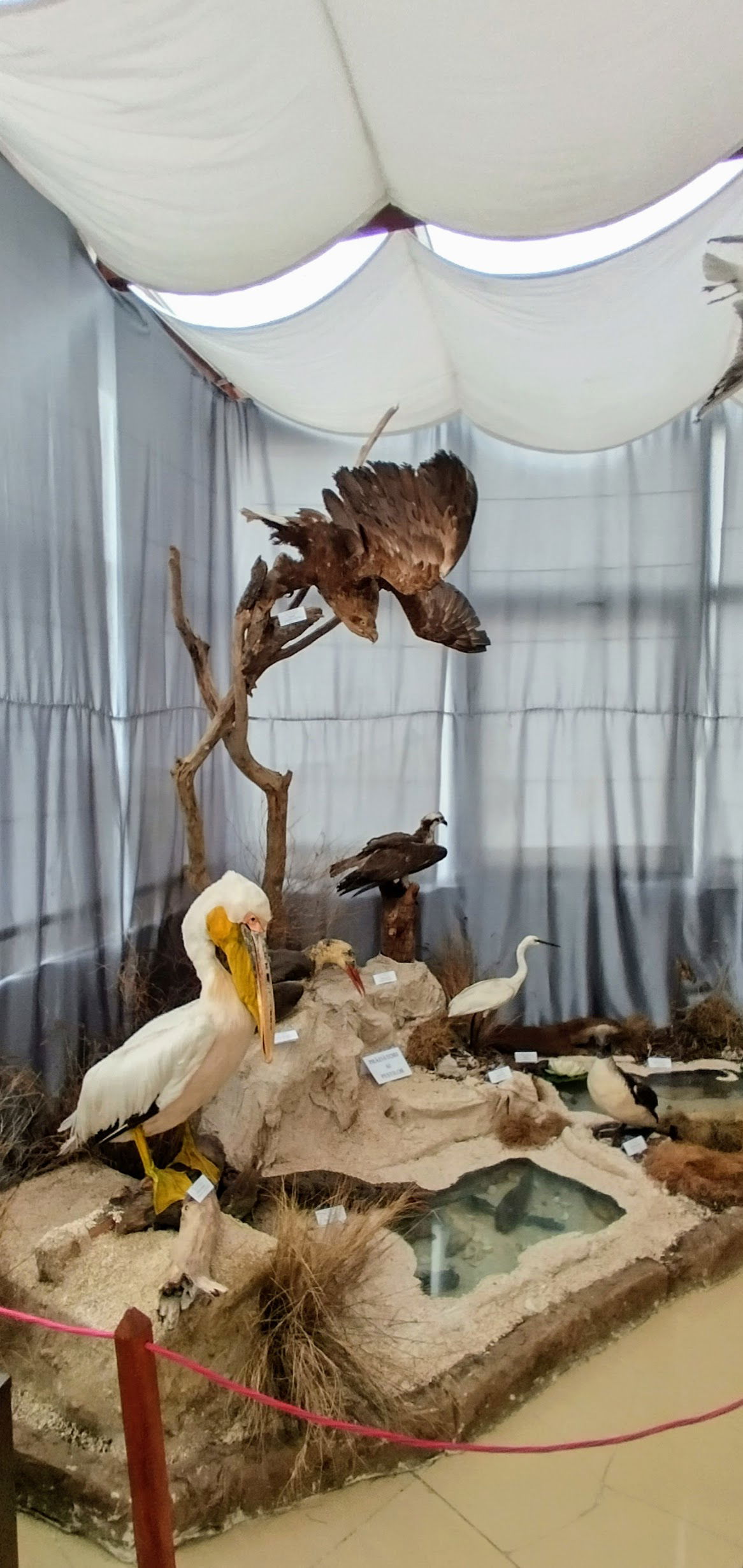
Faună locală // Local fauna
Aceste diorame sunt foarte reușite, ele reproducând și sunetele animalelor care le "populează".
These dioramas are very well done, reproducing the sounds of the animals that "inhabit" them.
Am continuat la etaj, unde am vizitat două expoziții: una de istorie naturală (cu varii aparate biologice, adaptate diferitelor lor ecosisteme, dar și cu exemplare de pești exotici conservați) și una cu diorame reprezentând diferite stadii ale capturării și preparării peștelui pentru consum, ocupația de bază în regiune.
We continued to the upper floor, where we visited two exhibitions: one of natural history (with various biological specimens adapted to their respective ecosystems, as well as preserved specimens of exotic fish) and one with dioramas depicting different stages of fish capture and preparation for consumption, the main occupation in the region.

Coarnele în evoluție // The horns in evolution
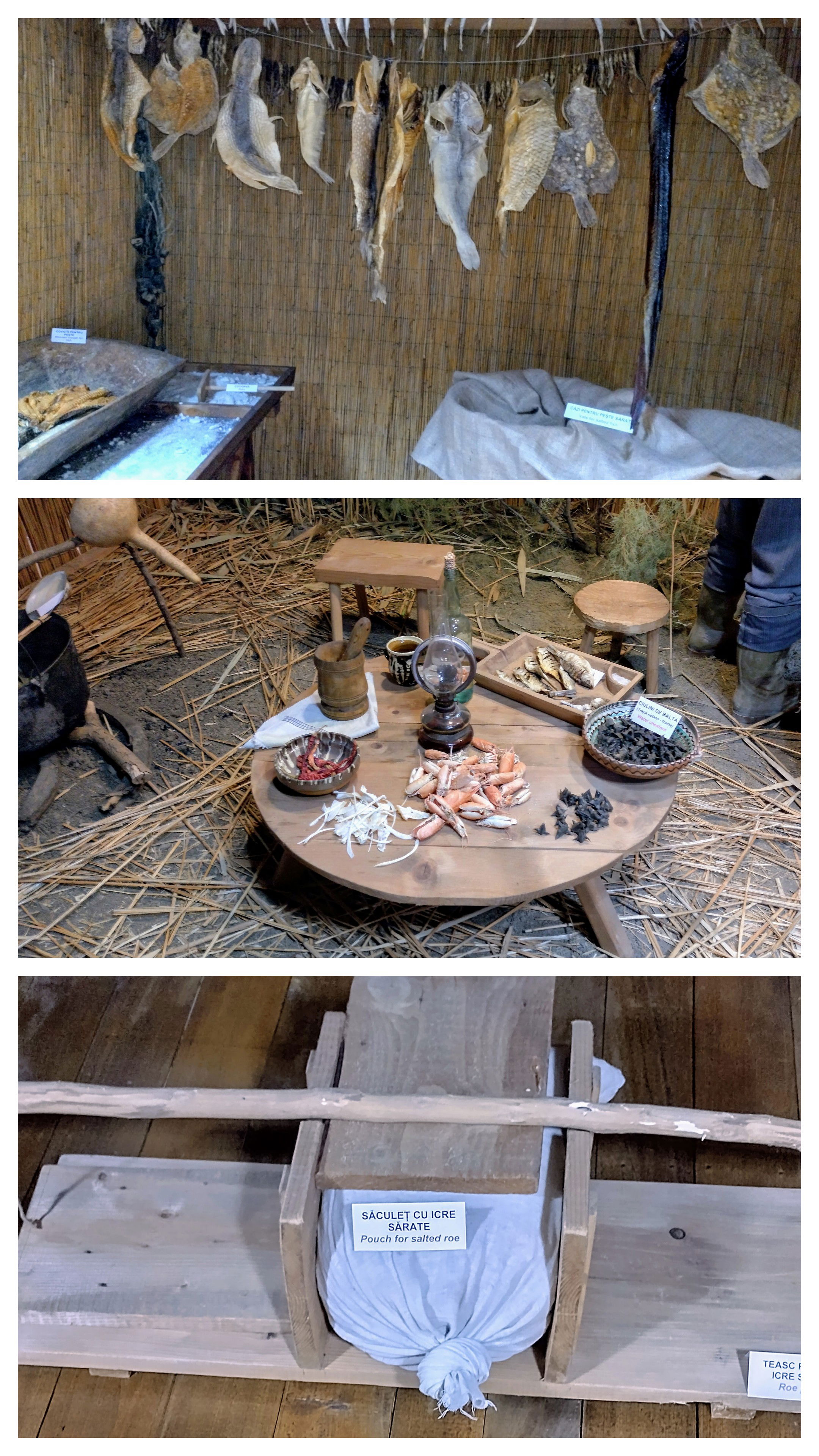
Diverse produse pescărești // Various fishing products
La subsol se află acvariile, unde se pot vedea pești din fauna locală, dar și pești exotici sau foarte rari (precum sturionii).
In the basement, there are aquariums where you can see fish from the local fauna, as well as exotic or very rare fish (such as sturgeons).
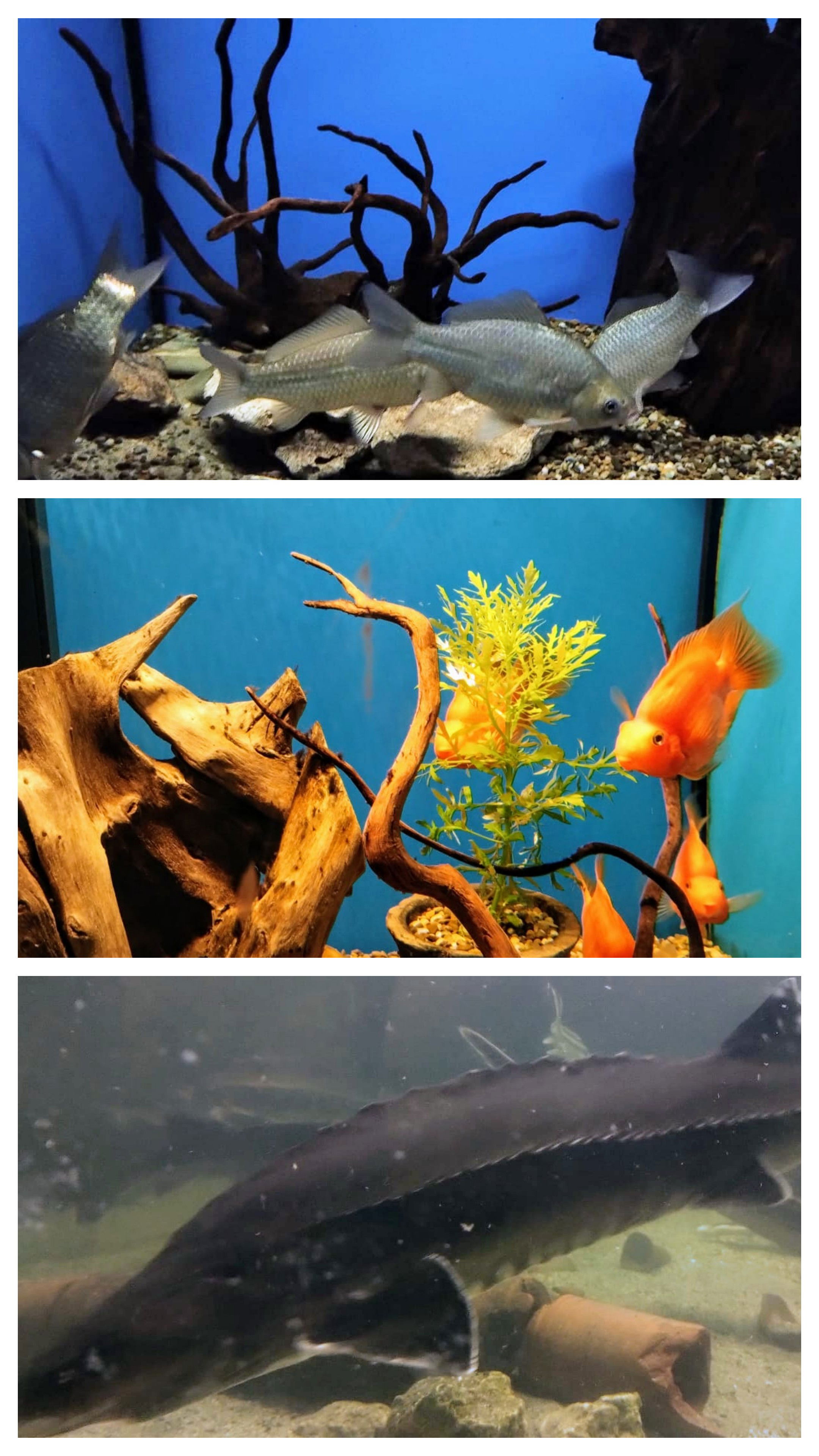
De sus: Carasul (Carassius gibelio), Peștele-papagal (Amphilophus citrinellus × Vieja melanurus) și Morunul-belugă (Huso dauricus) // From the top: the Prussian carp (Carassius gibelio), the Blood Parrot Cichlid (Amphilophus citrinellus × Vieja melanurus), and the Kaluga (Huso dauricus)
Acvarii // Aquariums
Am văzut și broaște țestoase, foarte timide în natură.
We also saw turtles, very shy in nature.
4. Muzeul de Istorie şi Arheologie // The History and Archaeology Museum
Ambițioși, ne-am pornit și către cel de-al treilea obiectiv major pe ziua de azi, complexul Muzeului de Istorie și Arheologie.
Ambitious, we set off towards the third major objective of the day, the complex of the History and Archaeology Museum.
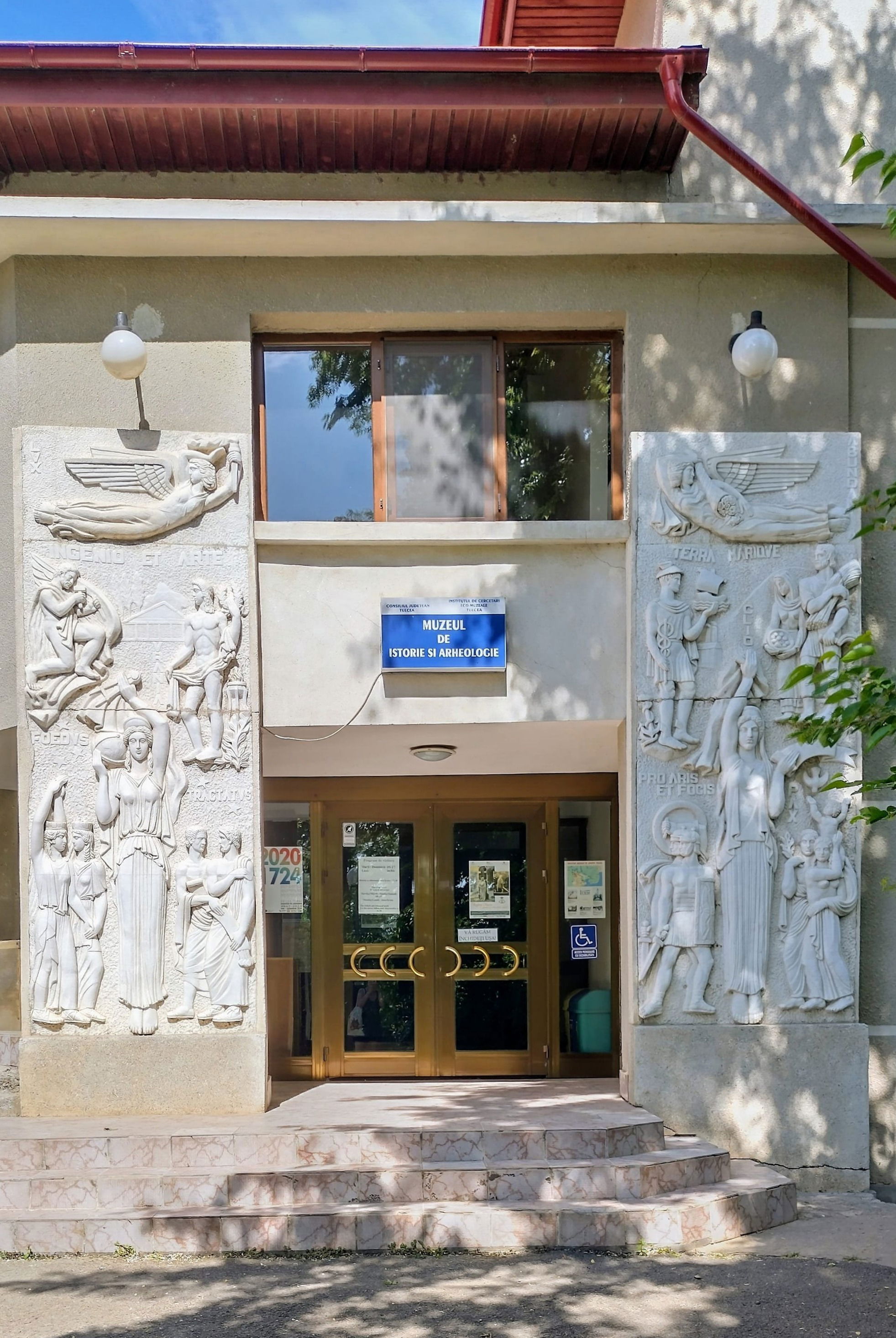
Intrarea în muzeu // The entrance to the museum
Aici am văzut întâi ruinele cetății Aegyssus (din care n-a mai rămas prea mult), înainte de a vizita cele două corpuri ale muzeului.
Here, we first saw the ruins of the Aegyssus fortress (of which not much remains) before visiting the two parts of the museum.
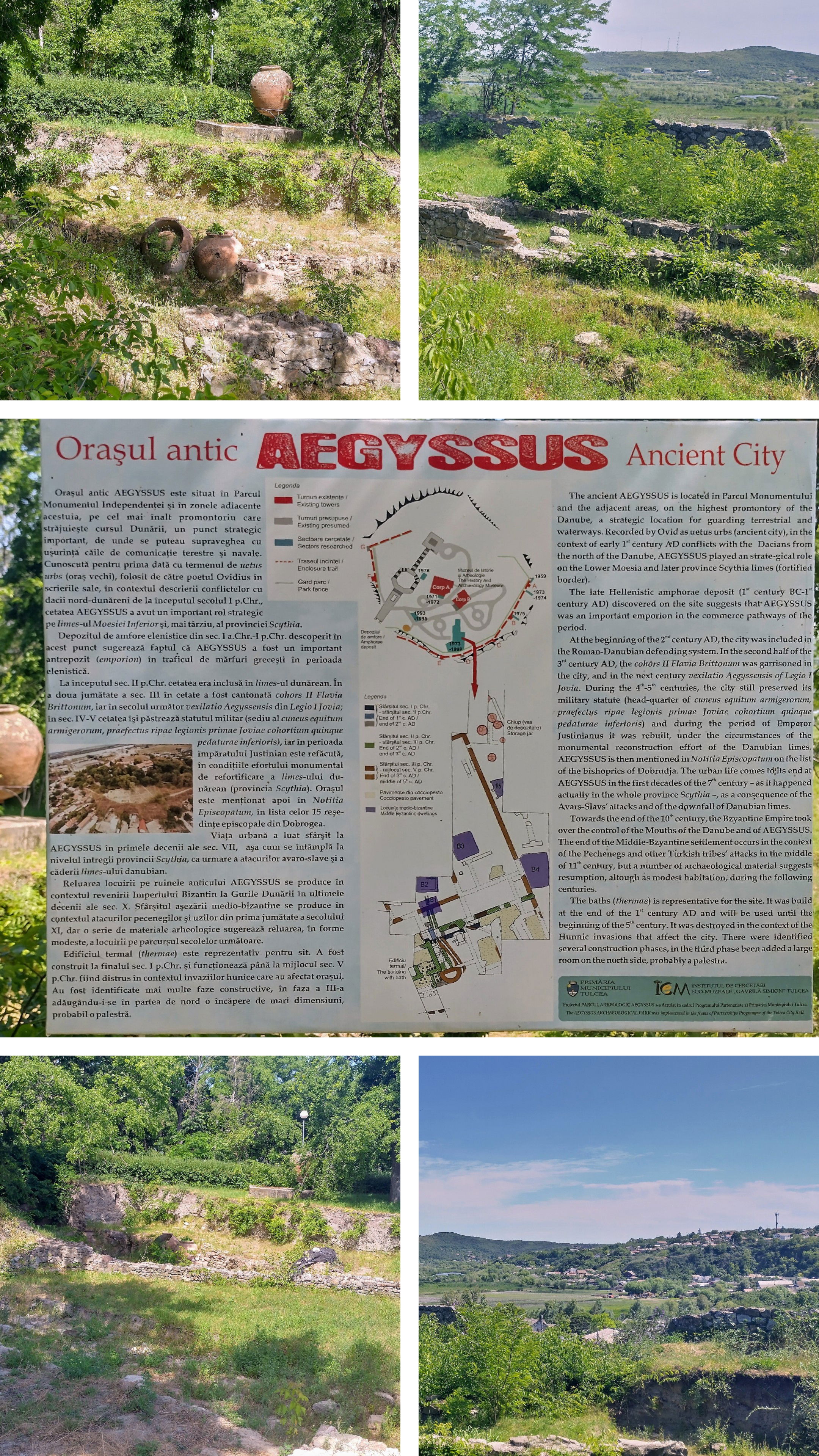
În primul corp, la parter, ne întâmpină o expoziție temporară despre Regina Maria, care, iubită și iubitoare de țară, a capturat și inimile tulcenilor.
In the first part, on the ground floor, we were greeted by a temporary exhibition about Queen Marie, who, beloved by and loving of the country, also captured the hearts of the people of Tulcea.
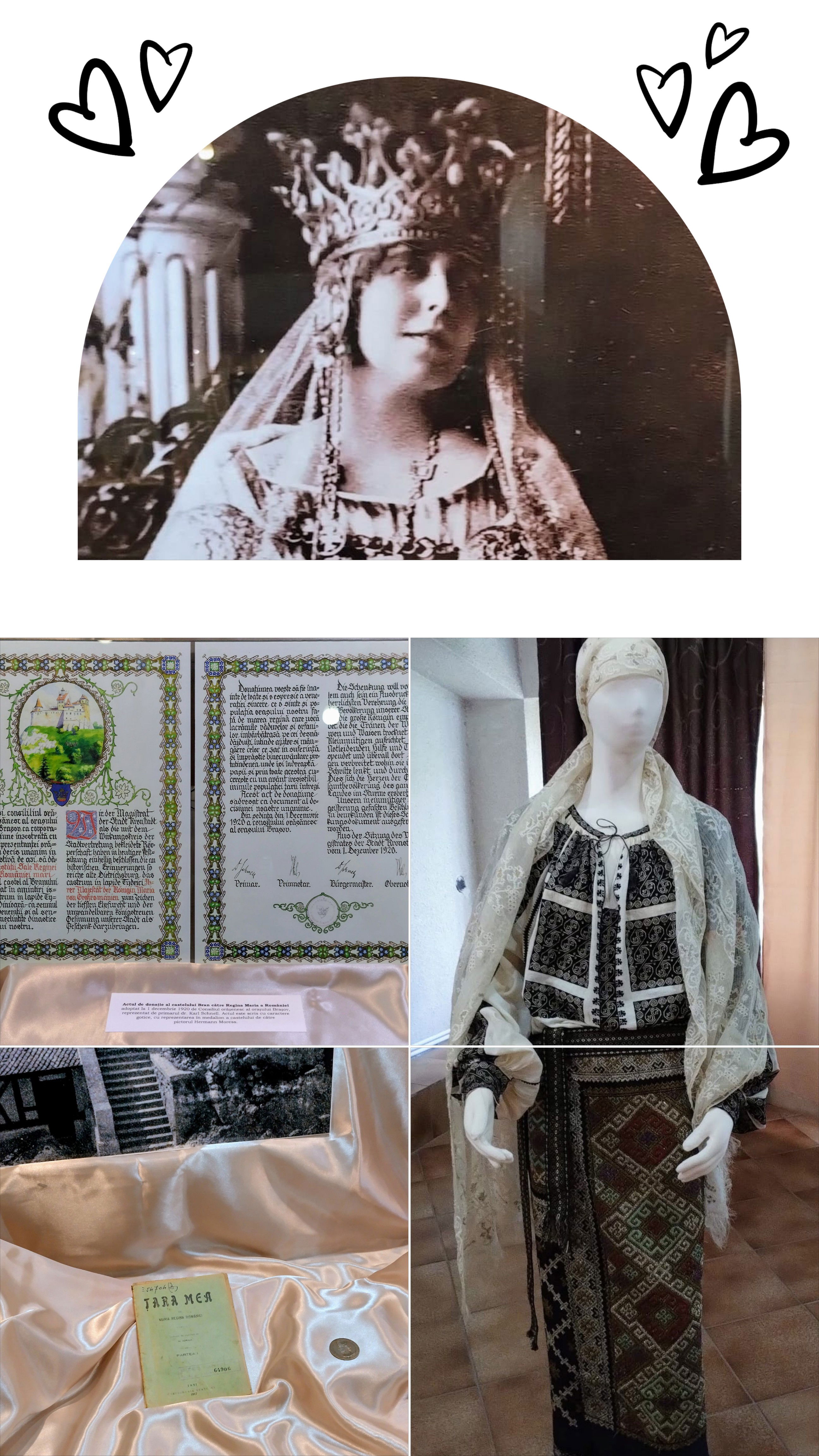
Portret de regină // A queen's portrait
Printre diversele exponate (mobilă, fotografii, costume, mici obiecte) se distinge un nucleu de vase lucrate variat în diferite materiale și stiluri.
Among the various exhibits (furniture, photographs, costumes, small objects), a collection of dishes stands out, crafted in various materials and styles.
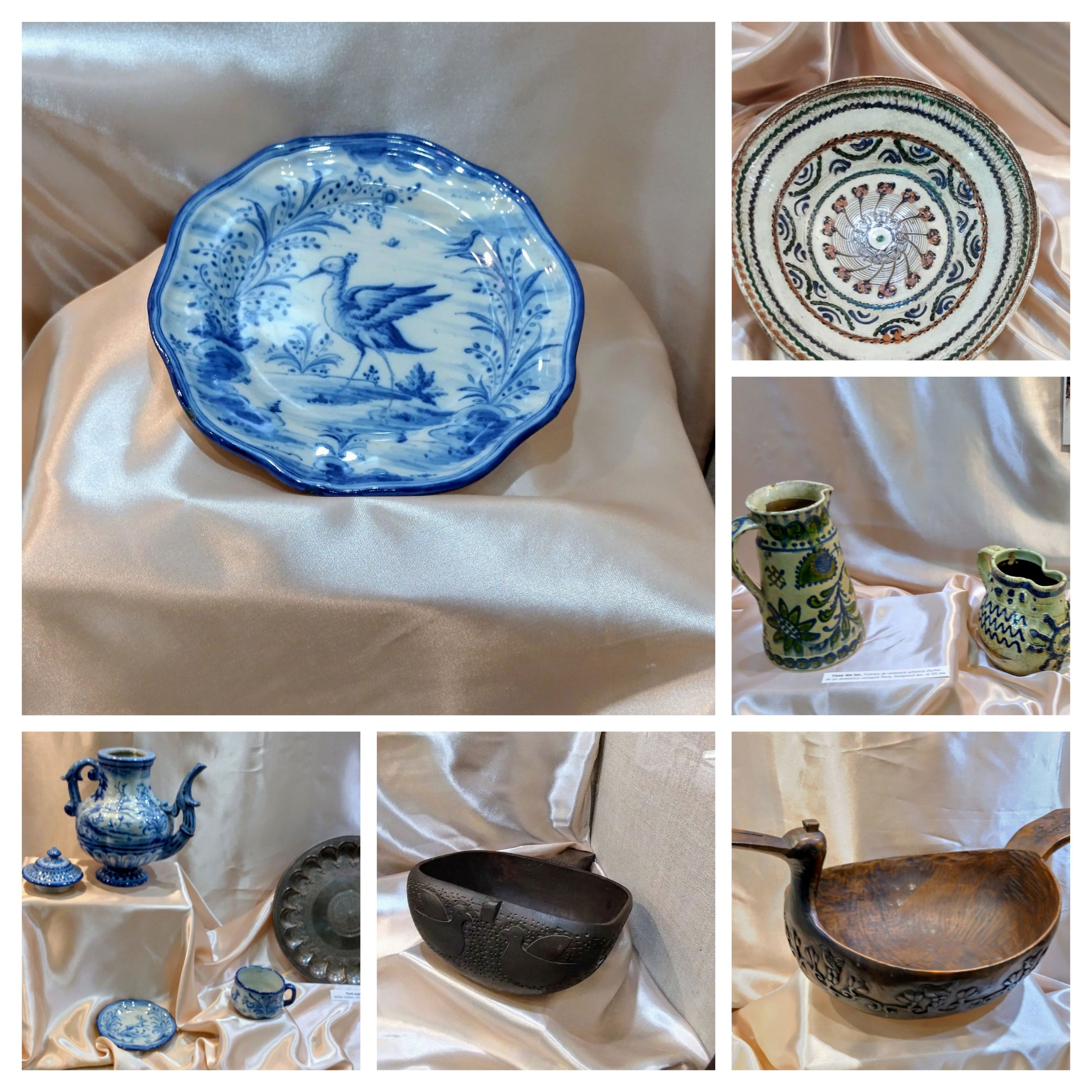
Continuăm apoi cu reprezentări ale preistoriei și istoriei perioadei elenistice (până în secolul I e.n.).
We then continue with representations of prehistory and the history of the Hellenistic period (up to the 1st century AD).
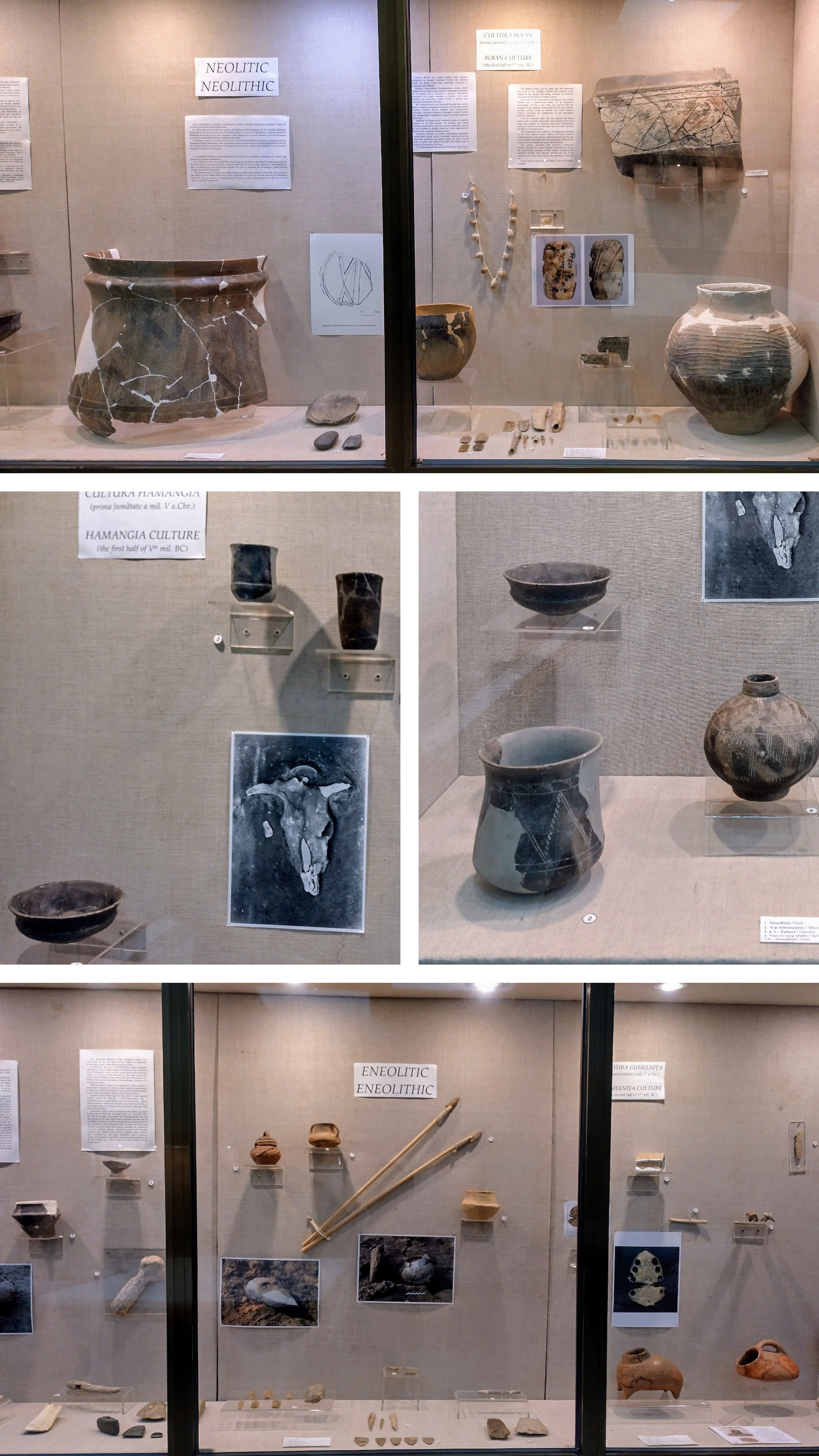
Epoca de piatră // The stone age
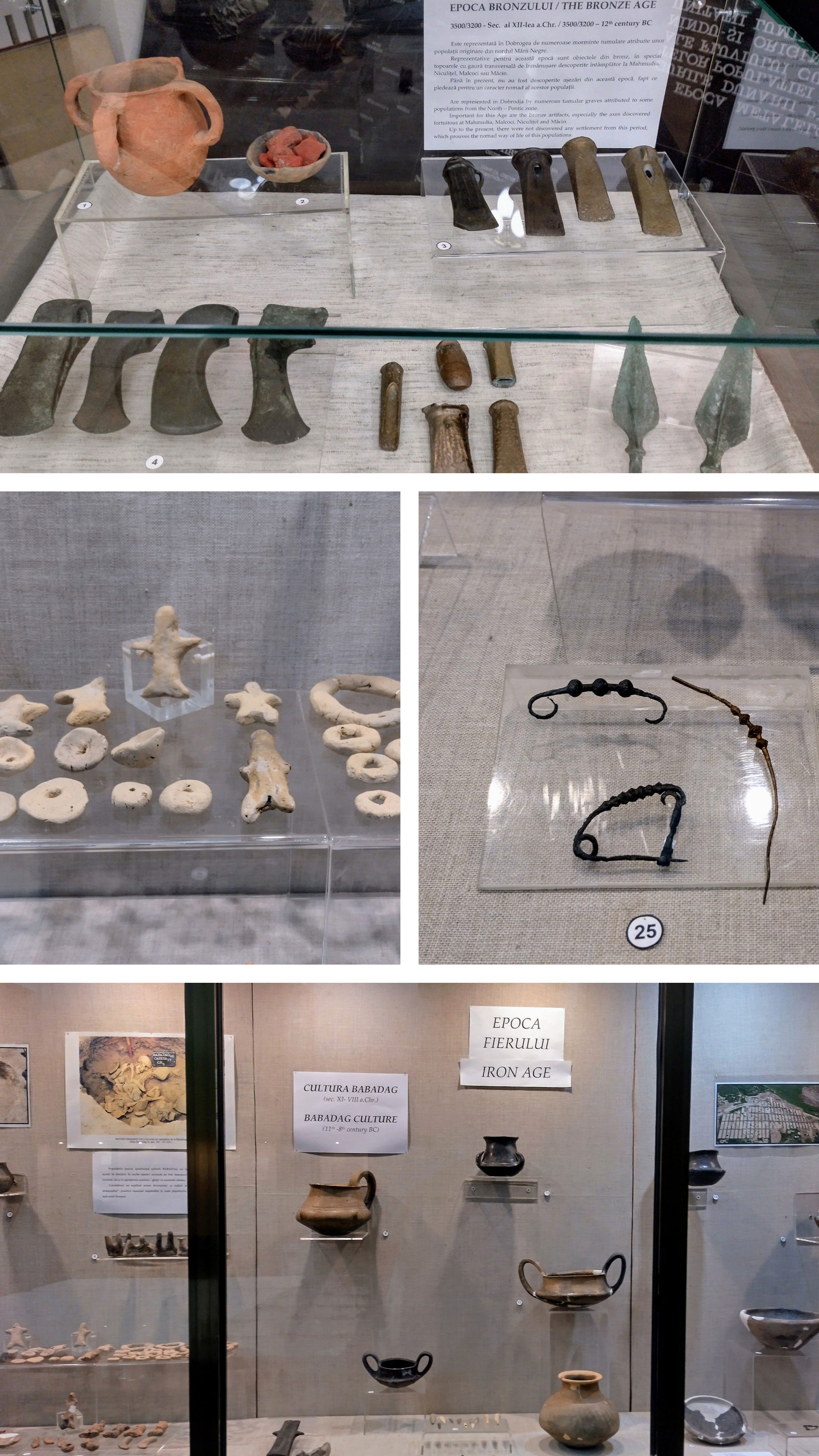
Epoca metalelor // The metals' age
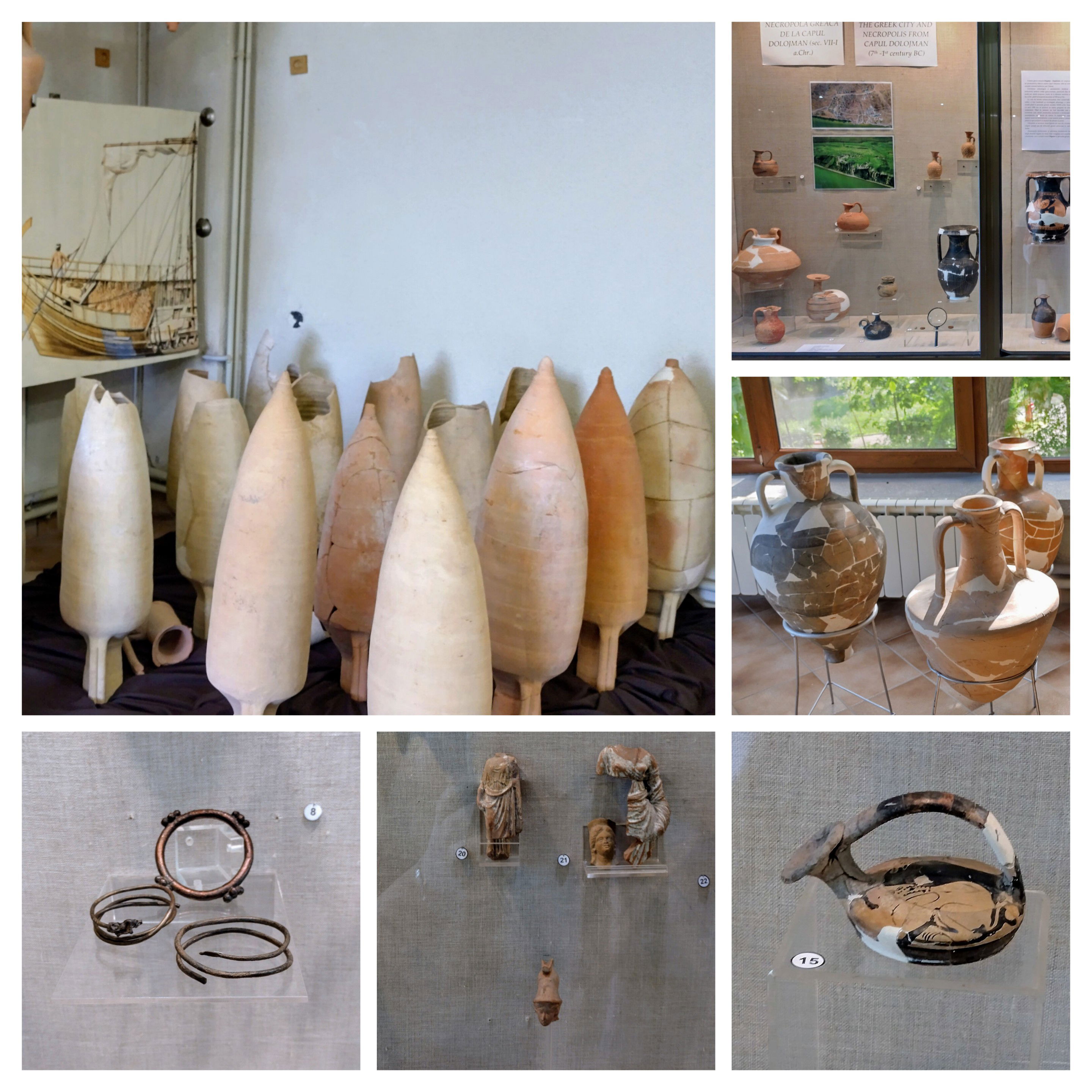
Începutul istoriei - obiecte grecești // The beginning of history - Greek objects
În cel de-al doilea corp al muzeului se află, la parter, o serie de monumente funerare și altare, iar la etaj, o impresionantă colecție numismatică pre-romană, romană și bizantină, inclusiv tezaure getice și tătărești.
In the second part of the museum, on the ground floor, there is a series of funerary monuments and altars, while on the upper floor, there is an impressive numismatic collection from the pre-Roman, Roman, and Byzantine periods, including Getic and Tatar treasures.
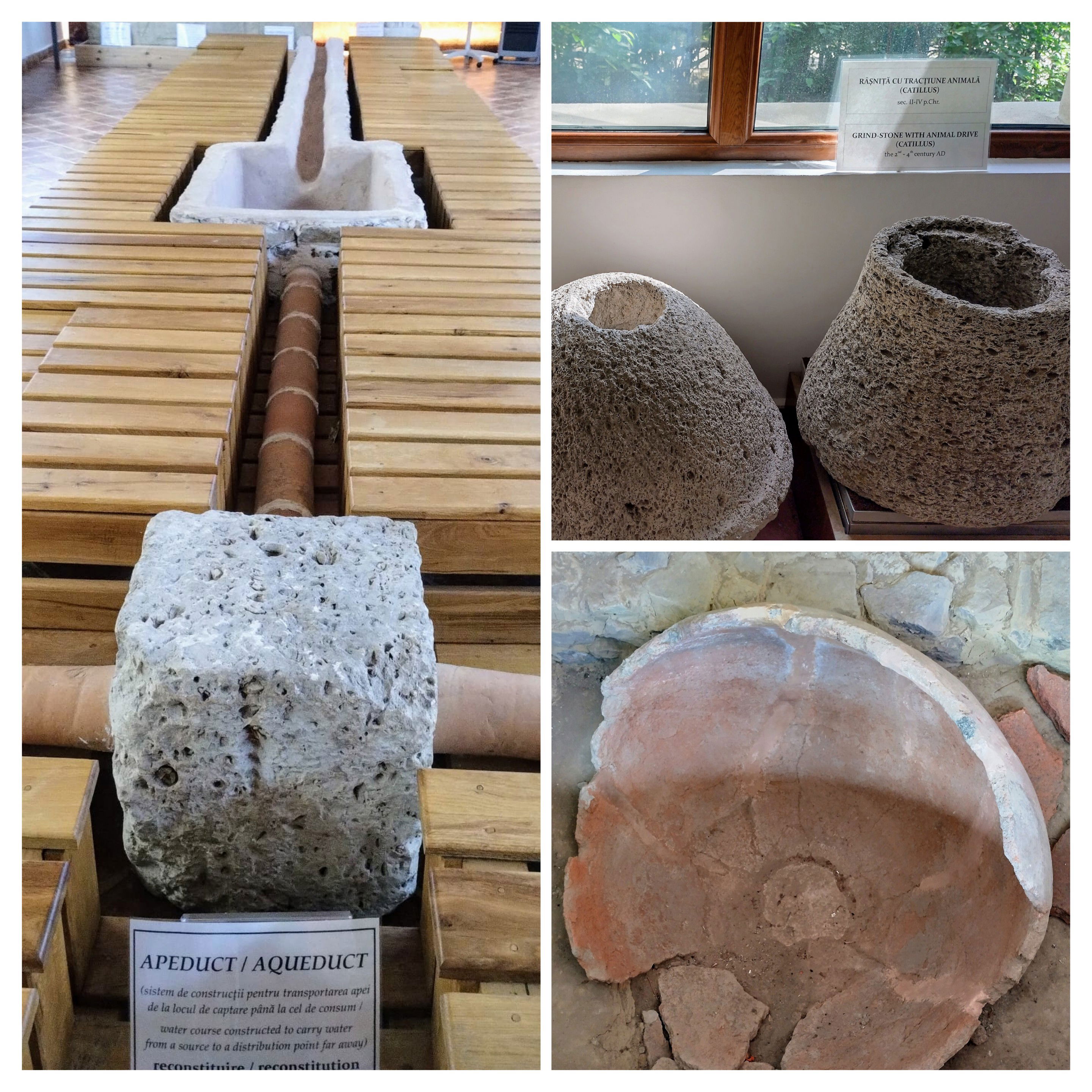
Tehnică romană // Roman techniques
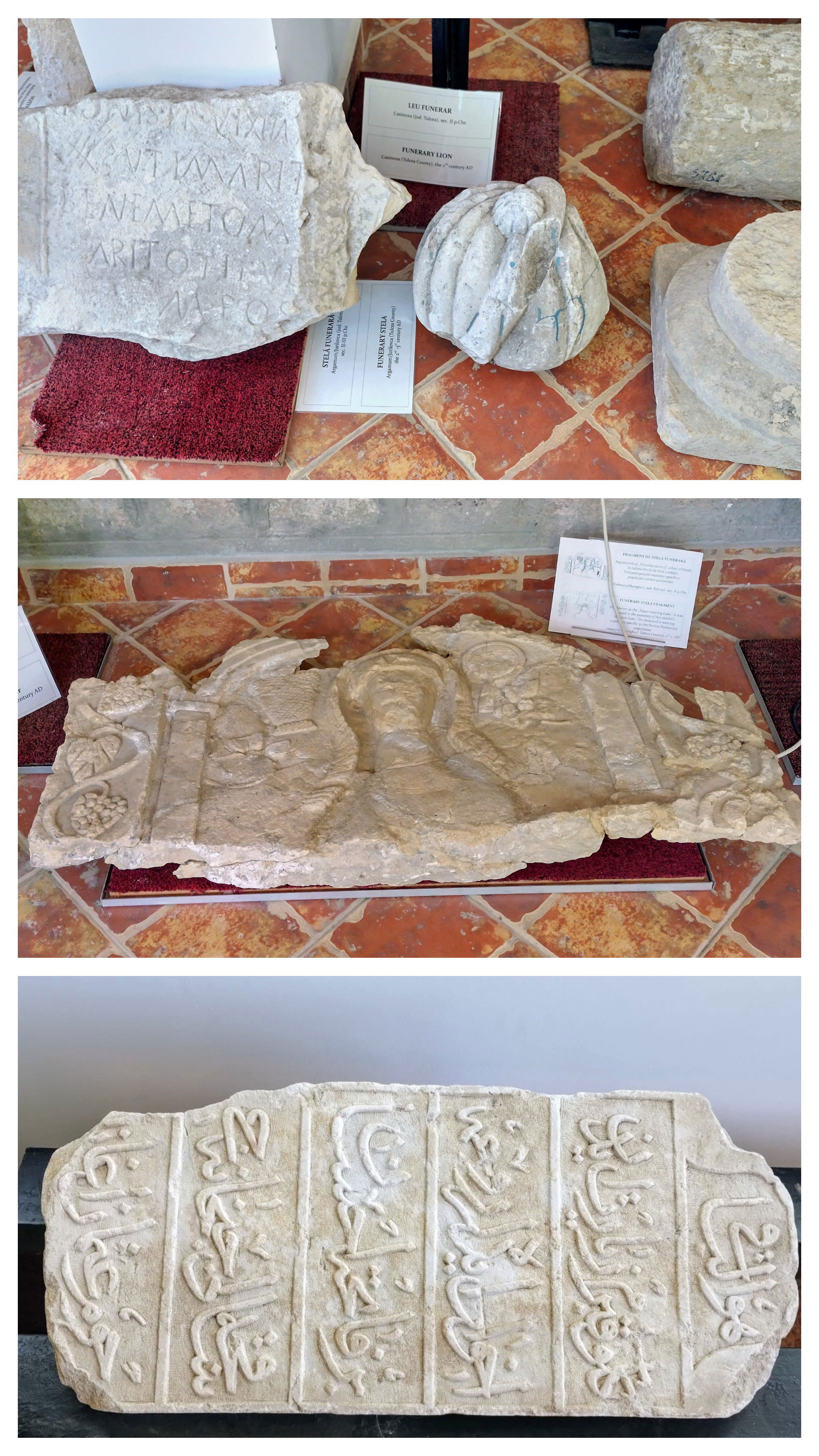
Stele funerare grecești, bizantine și musulmane // Greek, Byzantine and Muslim funerary stelae
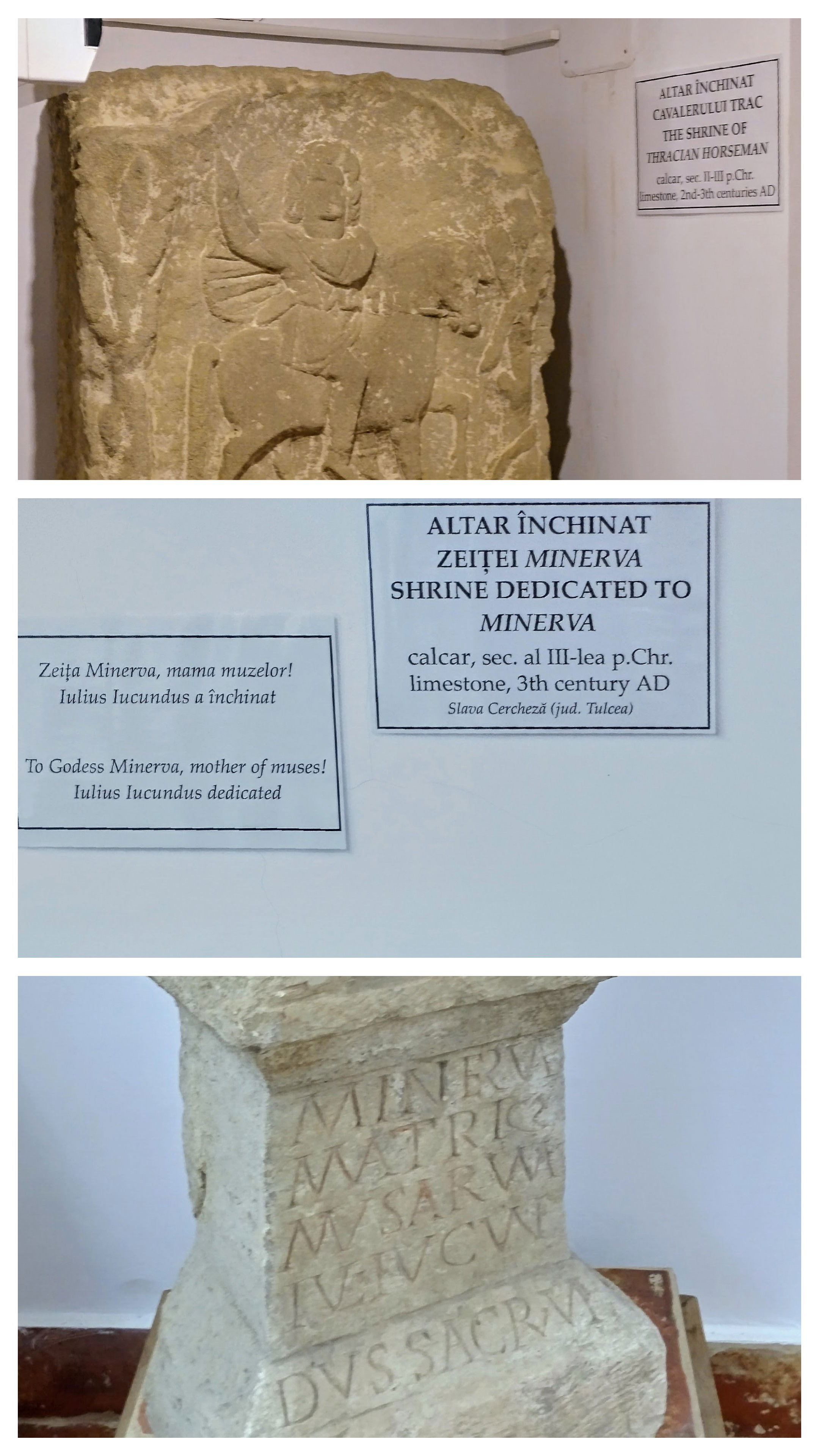
Religia la antici... // Religion of the ancient...
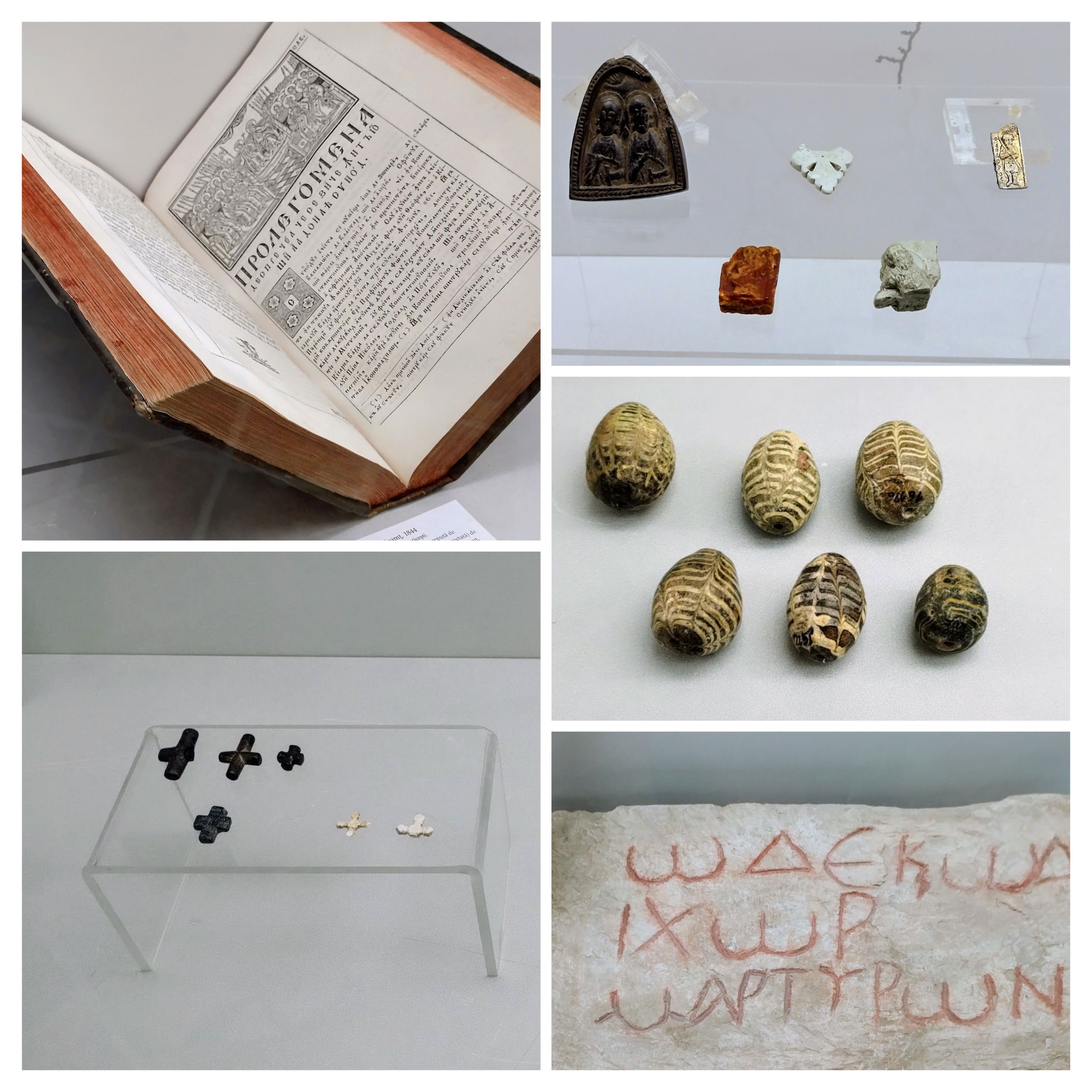
...și la bizantini // ...and the Byzantines
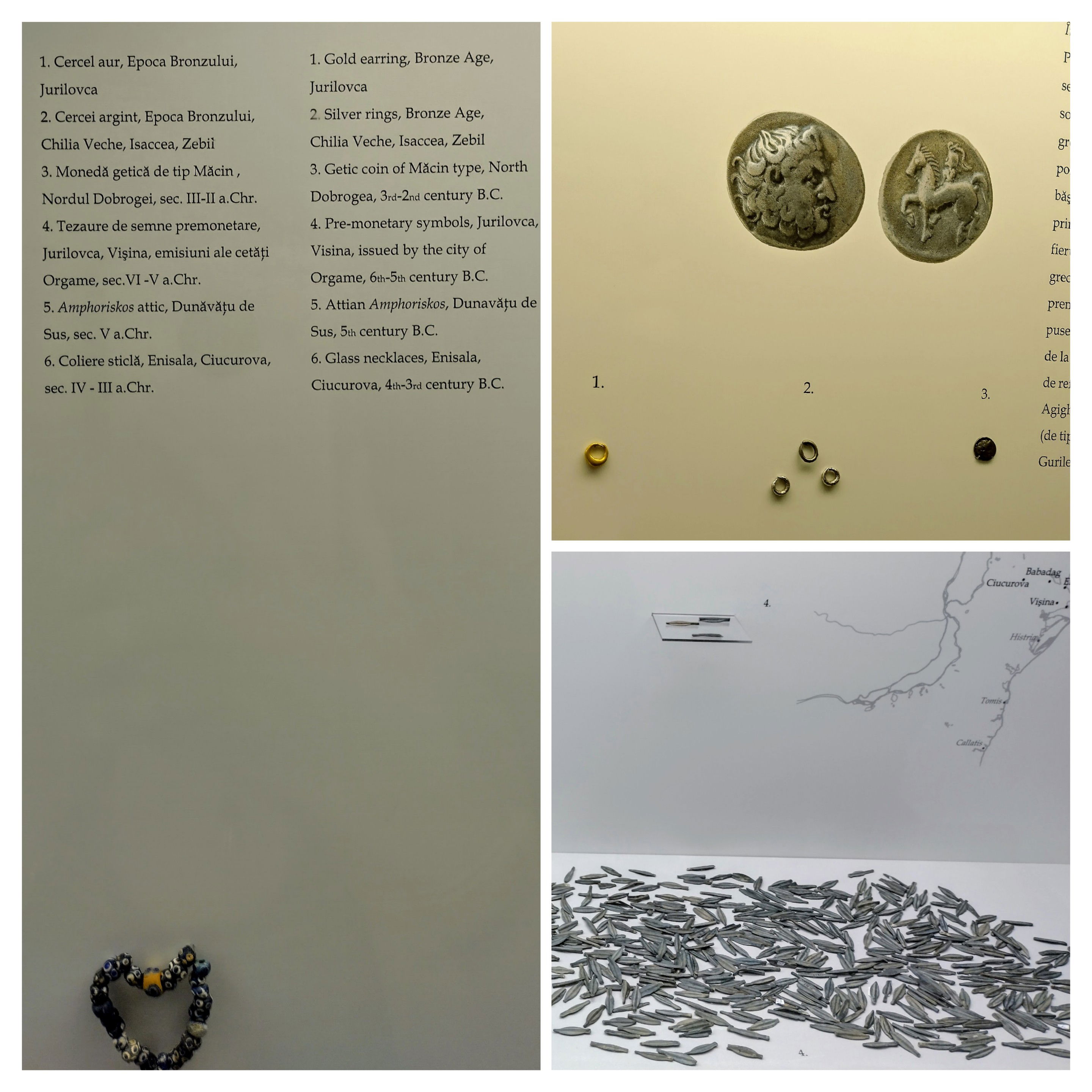
Tezaur getic // Getic treasure
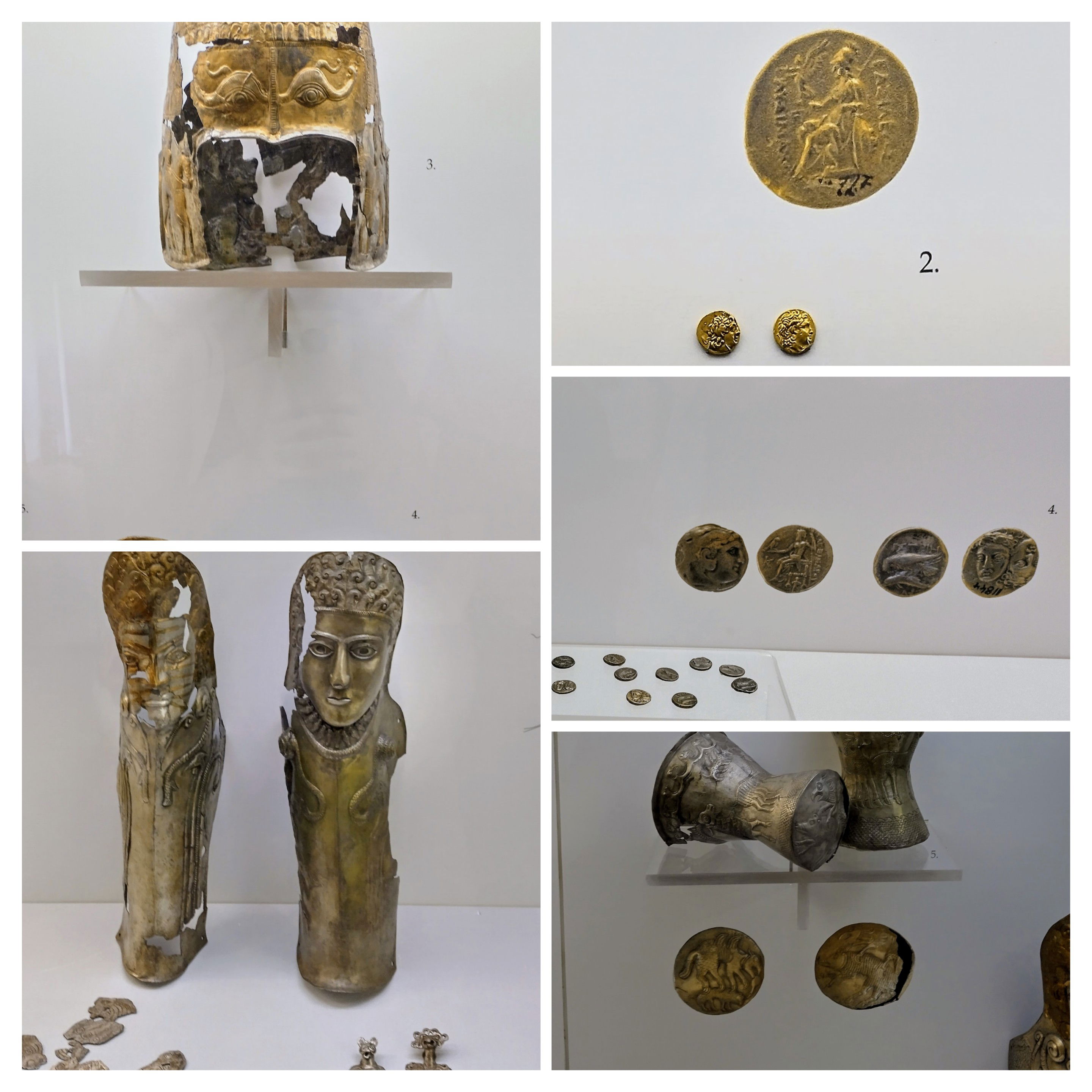
Tezaurul princiar (elenistic) de la Agighiol // The (helenistic) princiary treasure of Agighiol
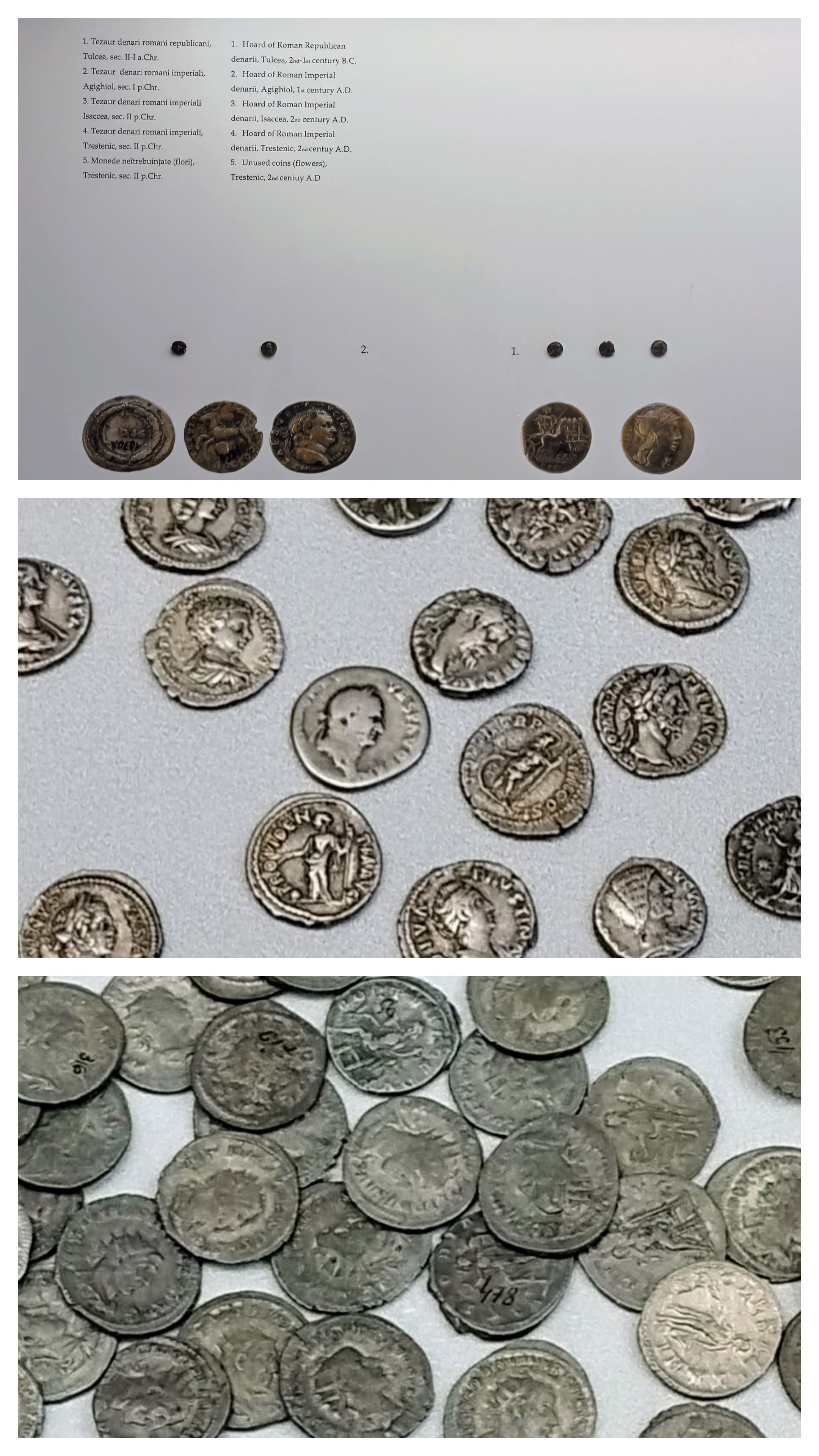
Tezaur roman: Denari republicani și imperiali // Roman treasure: Republican and imperial denarii
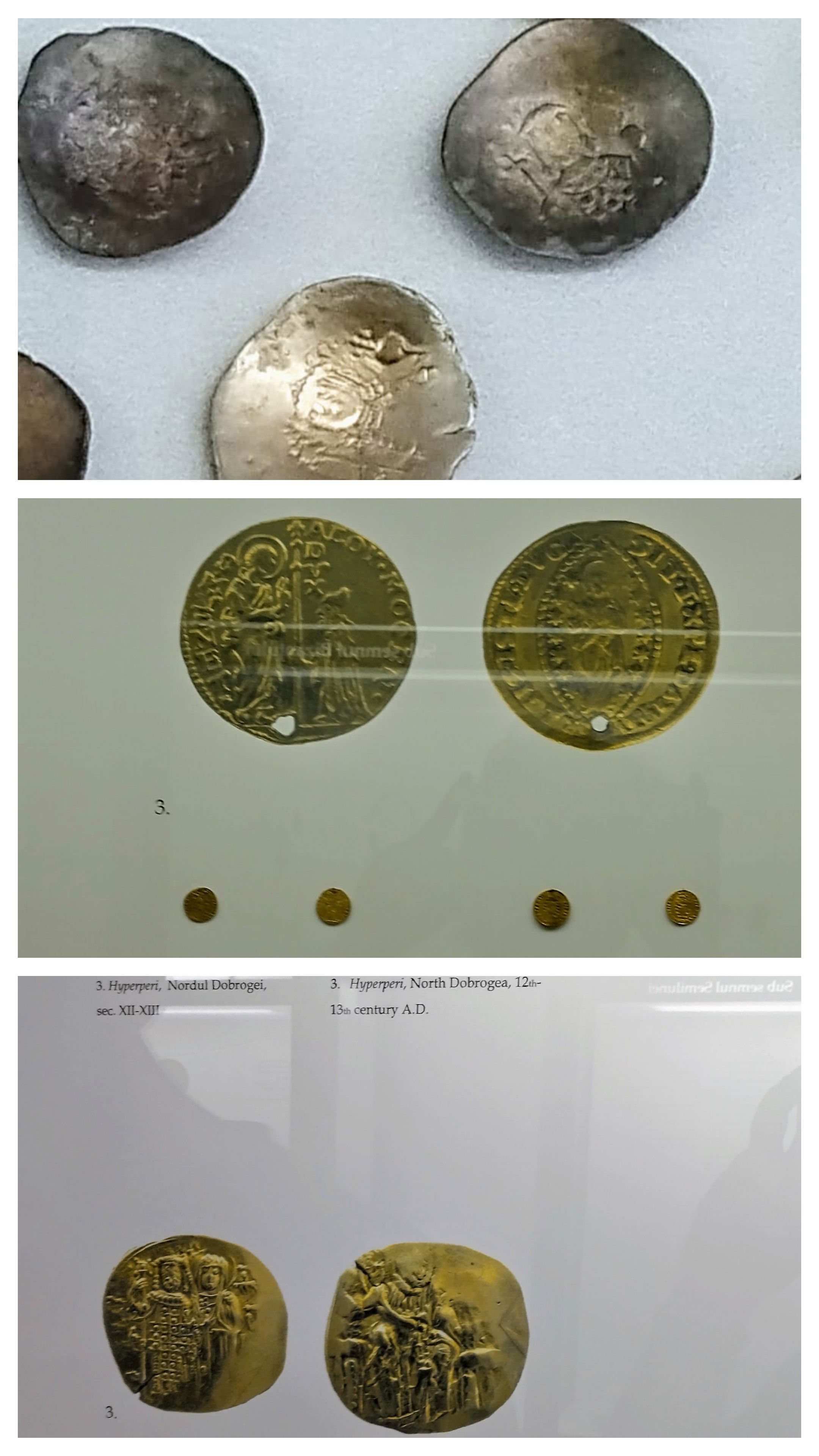
Tezaur bizantin : Soldi, ducați și hyperperi // Byzantine treasure: Soldi, ducats and hyperperi

Tezaur tătăresc // Tatar treasure
Mai vedem și alte podoabe interesante, și apoi ieșim către Monumentul Eroilor.
We also saw other interesting ornaments, and then we headed towards the Monument of the Heroes.
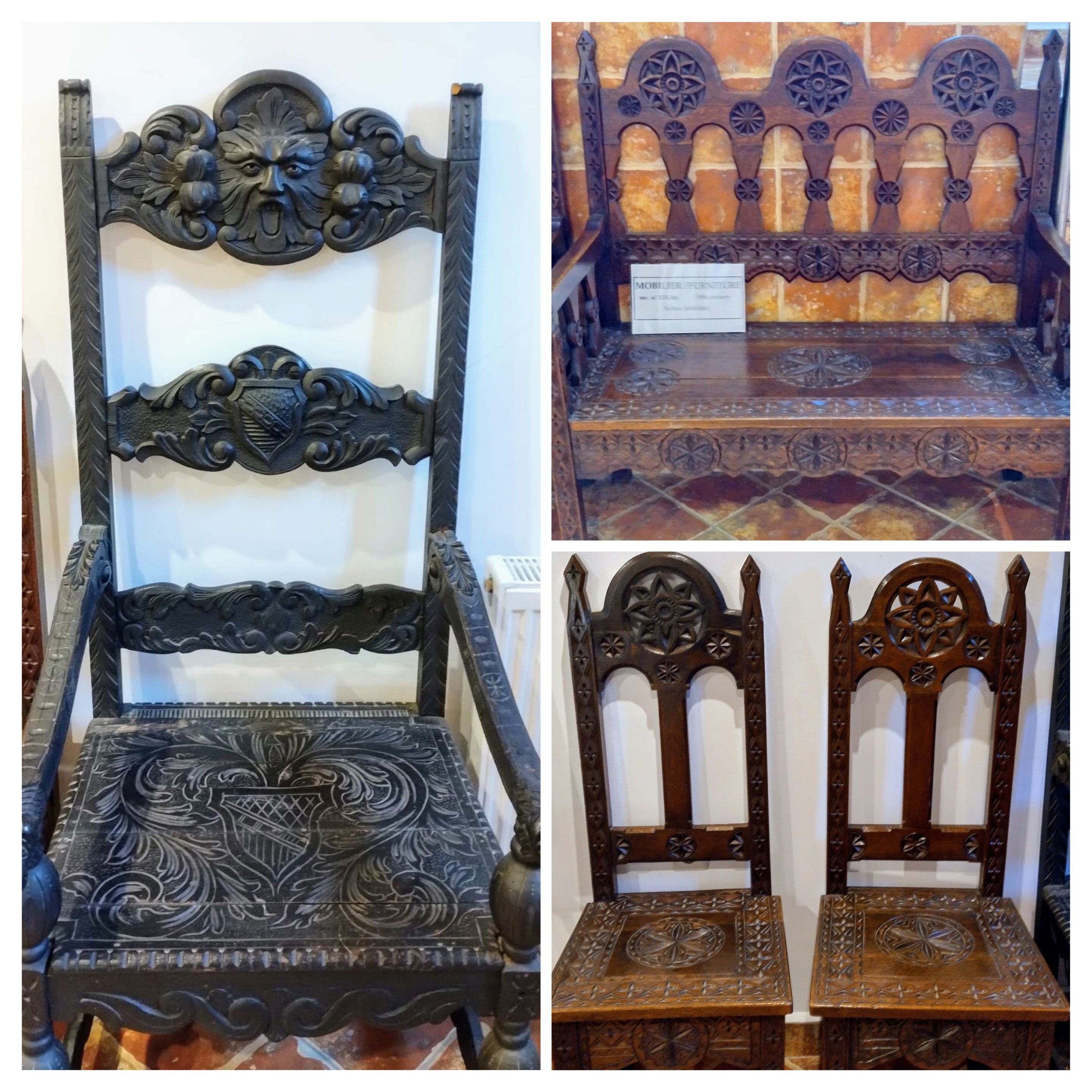
Mobilier bizantin // Byzantine furniture
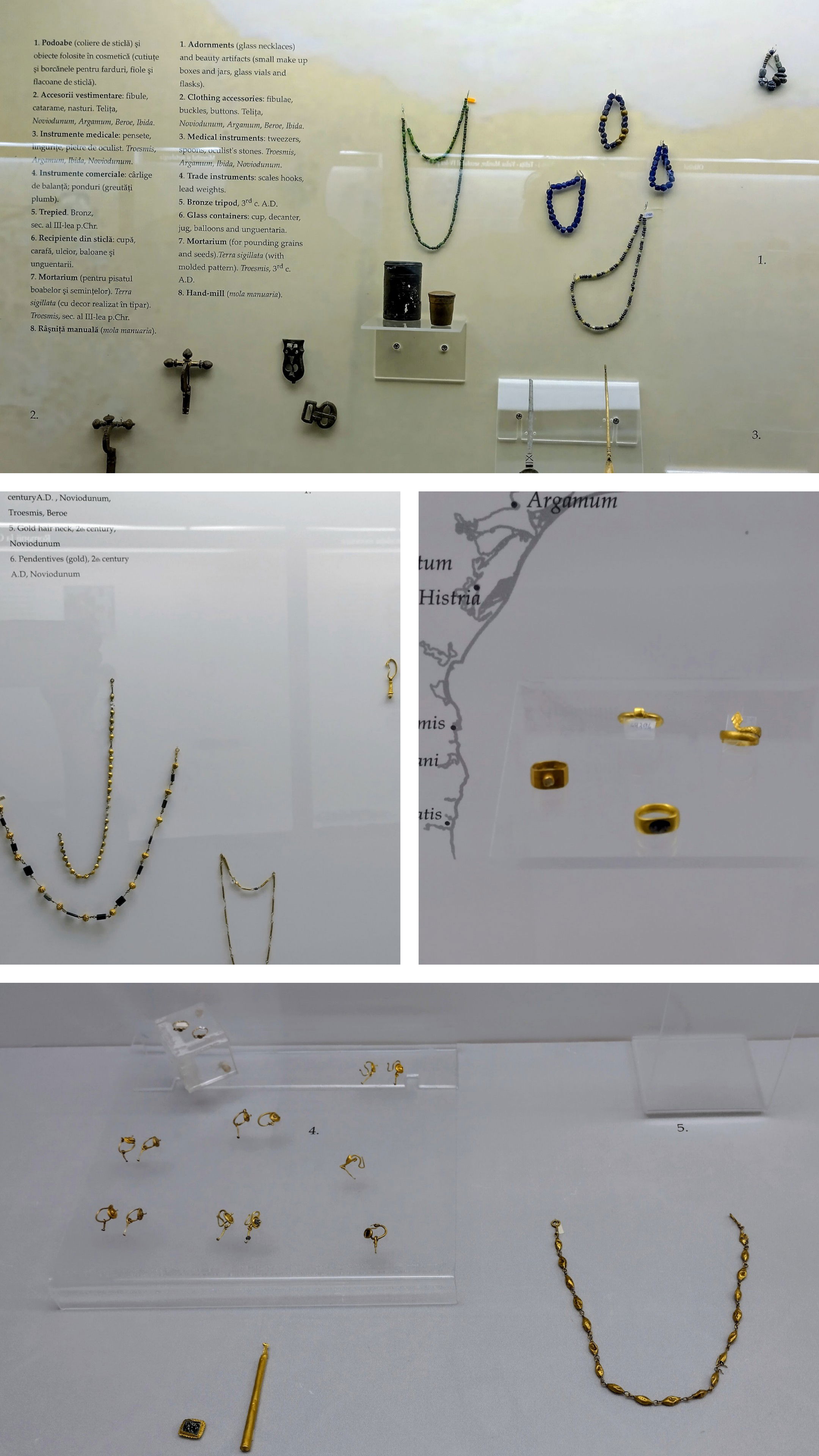
Bijuterii romane // Roman jewelry
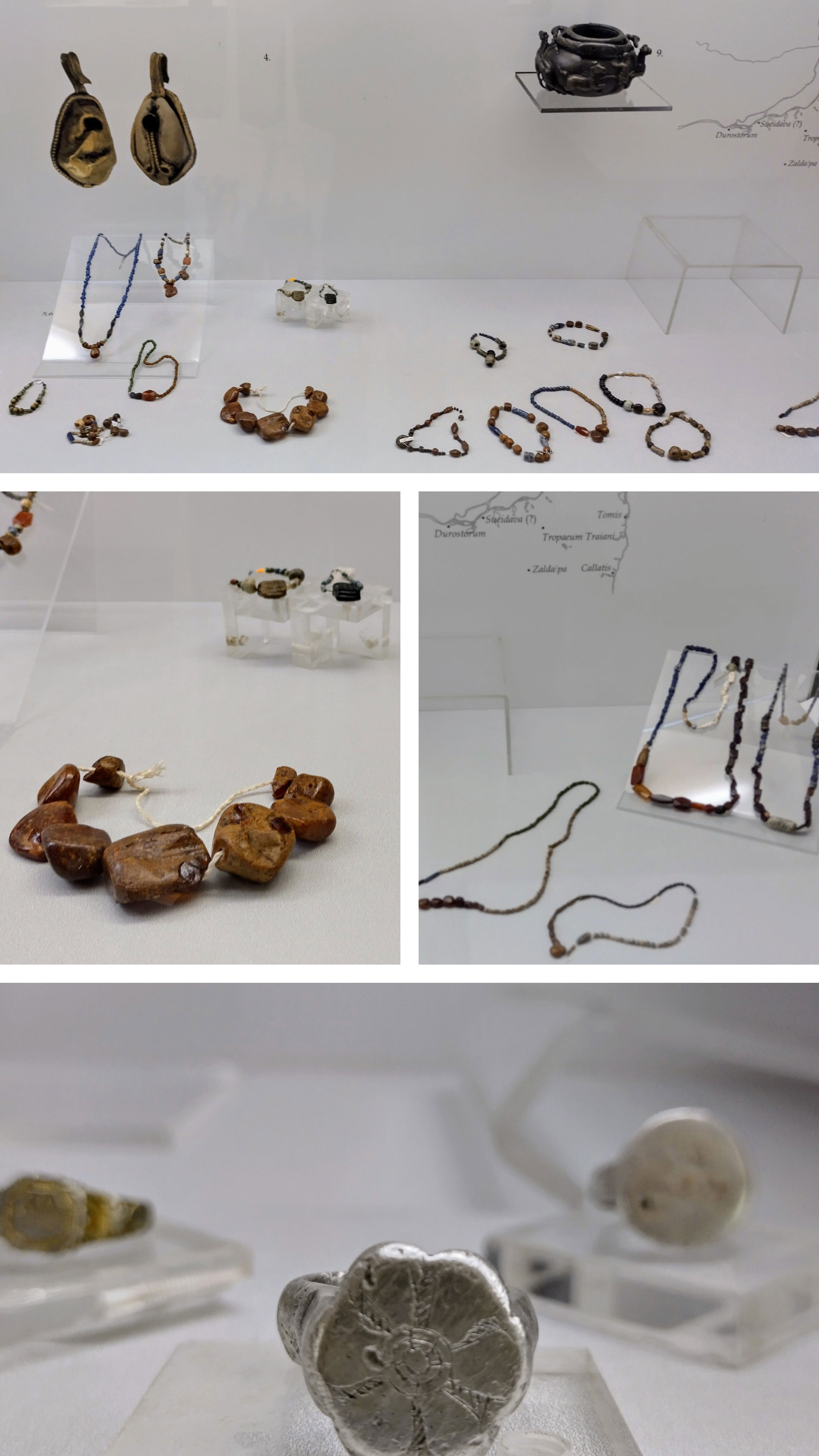
Bijuterii bizantine // Byzantine jewelry
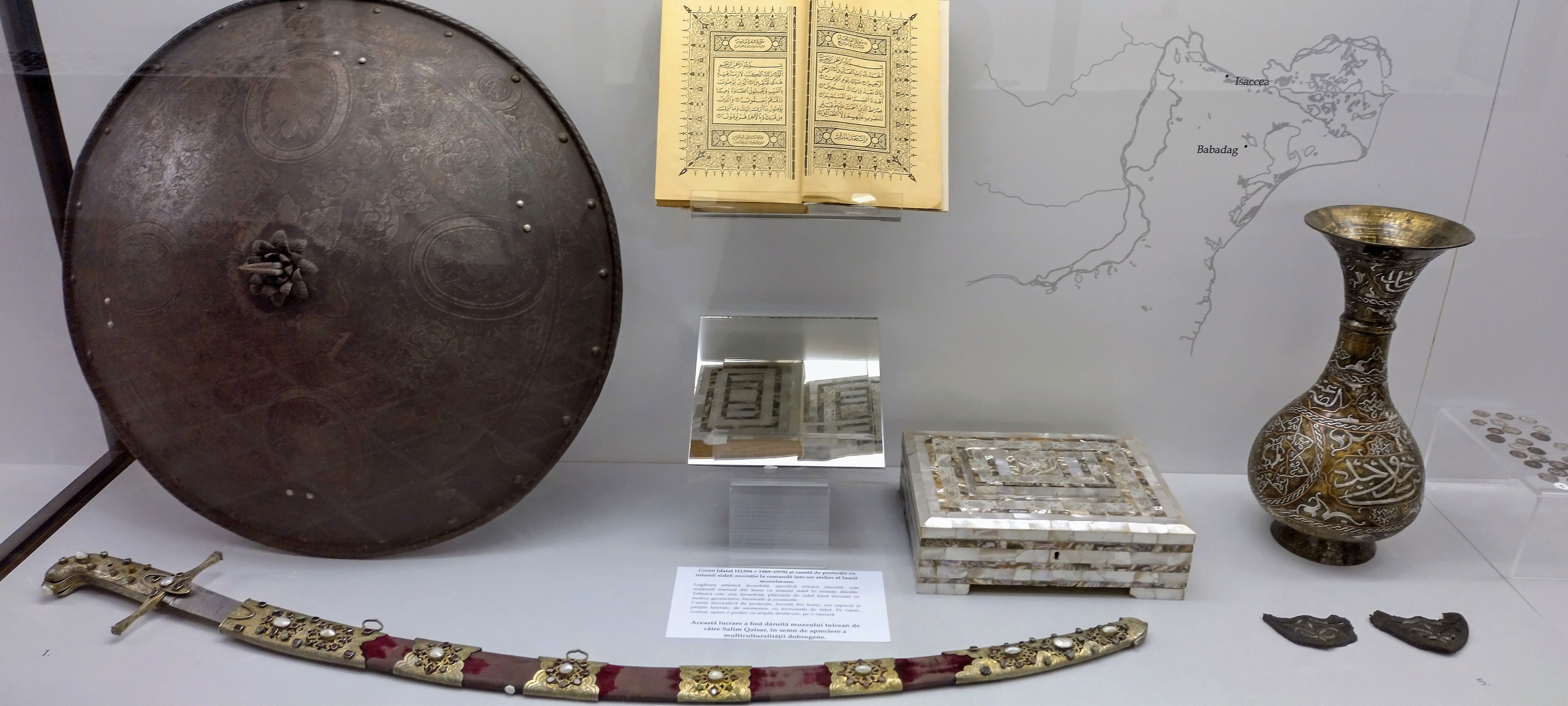
Obiecte otomane // Ottoman objects
5. În imediata apropiere a complexului, se află Monumemtul Eroilor. Liga pentru Propășirea Dobrogei, condusă de poetul Ion Nenițescu, a inițiat ridicarea Monumentului ca un omagiu adus eroismului și vitejiei poporului român în războiul pentru eliberarea de sub dominația otomană (1877-1878).
5. Closeby is the Monument of the Heroes. The League for the Advancement of Dobrogea, led by the poet Ion Nenițescu, initiated the erection of the Monument as a tribute to the heroism and bravery of the Romanian people in the war for liberation from Ottoman domination (1877-1878).
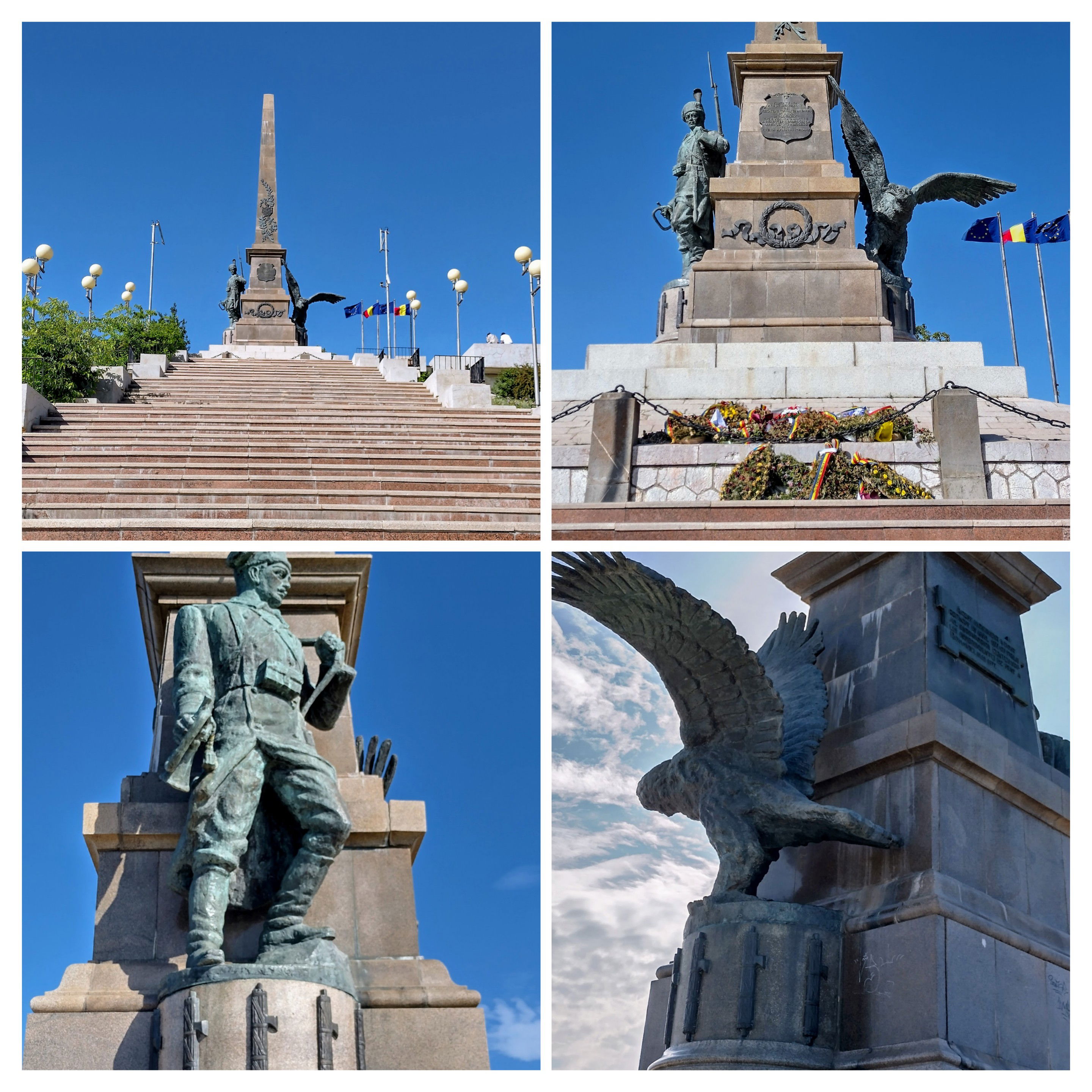
De sus vedem și spatele semnului tulcean în stil hollywoodian și ne bucurăm de frumoasele floricele care își fac loc chiar și-n cea mai mare uscăciune. Apoi, obosiți și hămesiți, ne-am întors la hotel2, unde am încheiat ziua cu o tură de bazin și o pizza în cameră3.
2. https://tinyurl.com/4m5m8fcs
3. https://tinyurl.com/p9h3ydh9
From above, we can also see the back of the Hollywood-style Tulcea sign and enjoy the beautiful little flowers that find their way even in the driest places. Then, tired and famished, we returned to the hotel2, where we ended the day with a swim and a pizza in the room3.
2. https://tinyurl.com/4m5m8fcs
3. https://tinyurl.com/p9h3ydh9
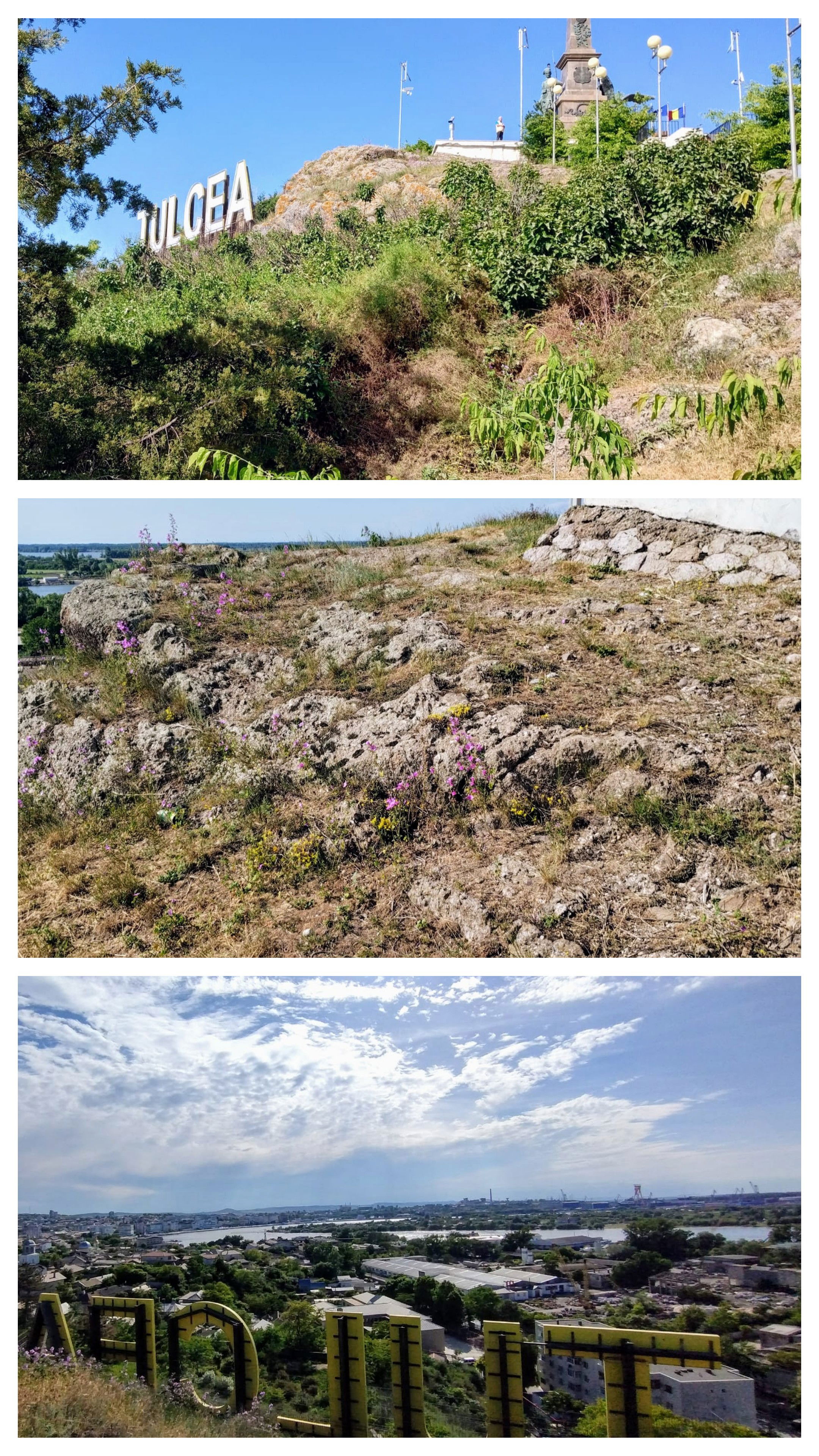
6. A doua zi dimineața am dat o fugă până în Parcul Ciuperca; aici am văzut zona de agrement, cu foișoare, grătare și plajă, precum și frumosul lac antropic Ciuperca cu lucrarea "Rugă pentru pace", o instalaţie luminoasă gigantică care pluteşte pe apă, a artistului G.T.N.
6. The next morning, we took a quick trip to Ciuperca Park; here we saw the recreational area with gazebos, barbecue spots, and a beach, as well as the beautiful man-made Ciuperca Lake with the work "Prayer for peace", a gigantic light installation floating on water, by the artist G.T.N.
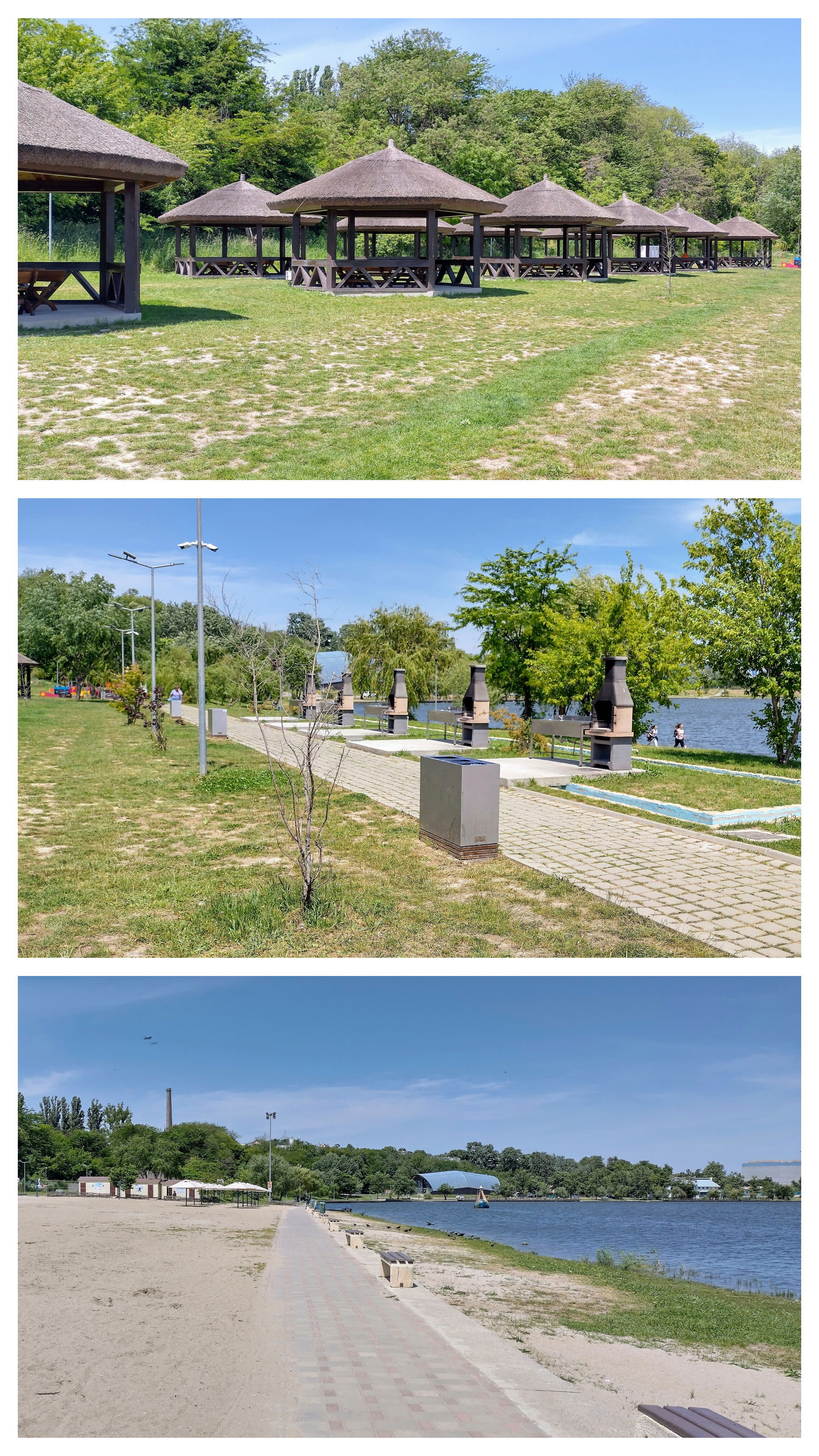
Zona de agrement // Recreational area
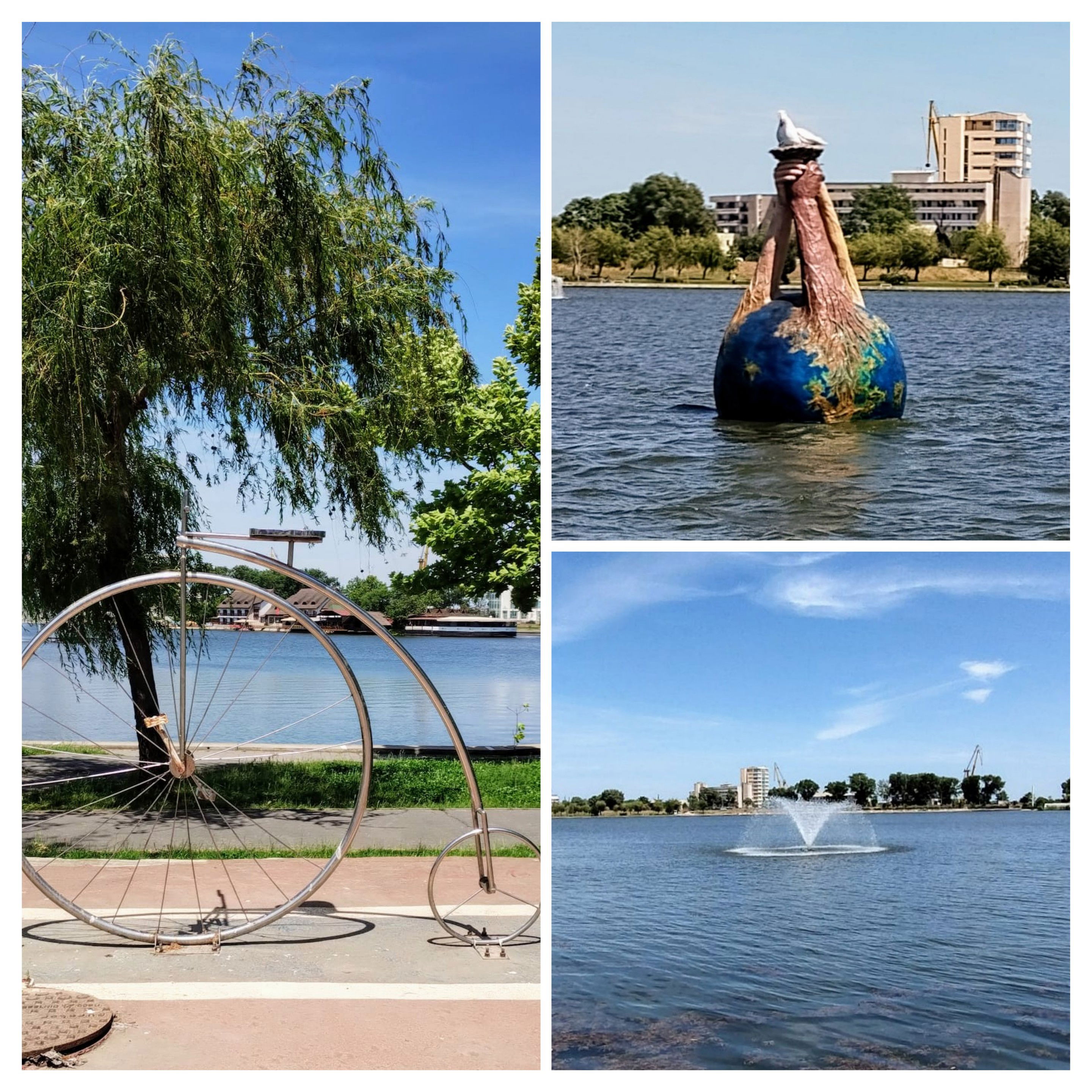
Lacul Ciuperca // Ciuperca (mushroom) lake
Am mâncat de prânz4 apoi, înainte de a pleca spre Mila 23. Ne întoarcem în Tulcea pentru încă o zi și jumătate, după ce vizităm Delta Dunării în partea sa de nord.
4. https://tinyurl.com/2x5zx8cf
We then had lunch4, before heading to Mila 23. We are returning to Tulcea for another day and a half after visiting the northern part of the Danube Delta.
4. https://tinyurl.com/2x5zx8cf

- Cost: 95 RON trenul + 300 RON 2 nopți de cazare (loc în cameră dublă) + 10 RON intrare ME&AP + 25 RON intrare MDD + 10 RON intrare MI&A
- Durată: 6 ore cu trenul + 1 oră ME&AP + 1 oră MDD + 2 ore MI&A
- Verdict: 10/10 - merită absolut!
- Cost: 95 RON for the train + 300 RON for 2 nights of accommodation (a bed in a double room) + 10 RON for E&FAM entrance + 25 RON for DDM entrance + 10 RON for H&AM entrance
- Duration: 6 hours by train + 1 hour at E&FAM + 1 hour at DDM + 2 hours at H&AM
- Verdict: 10/10 - absolutely worth it!
